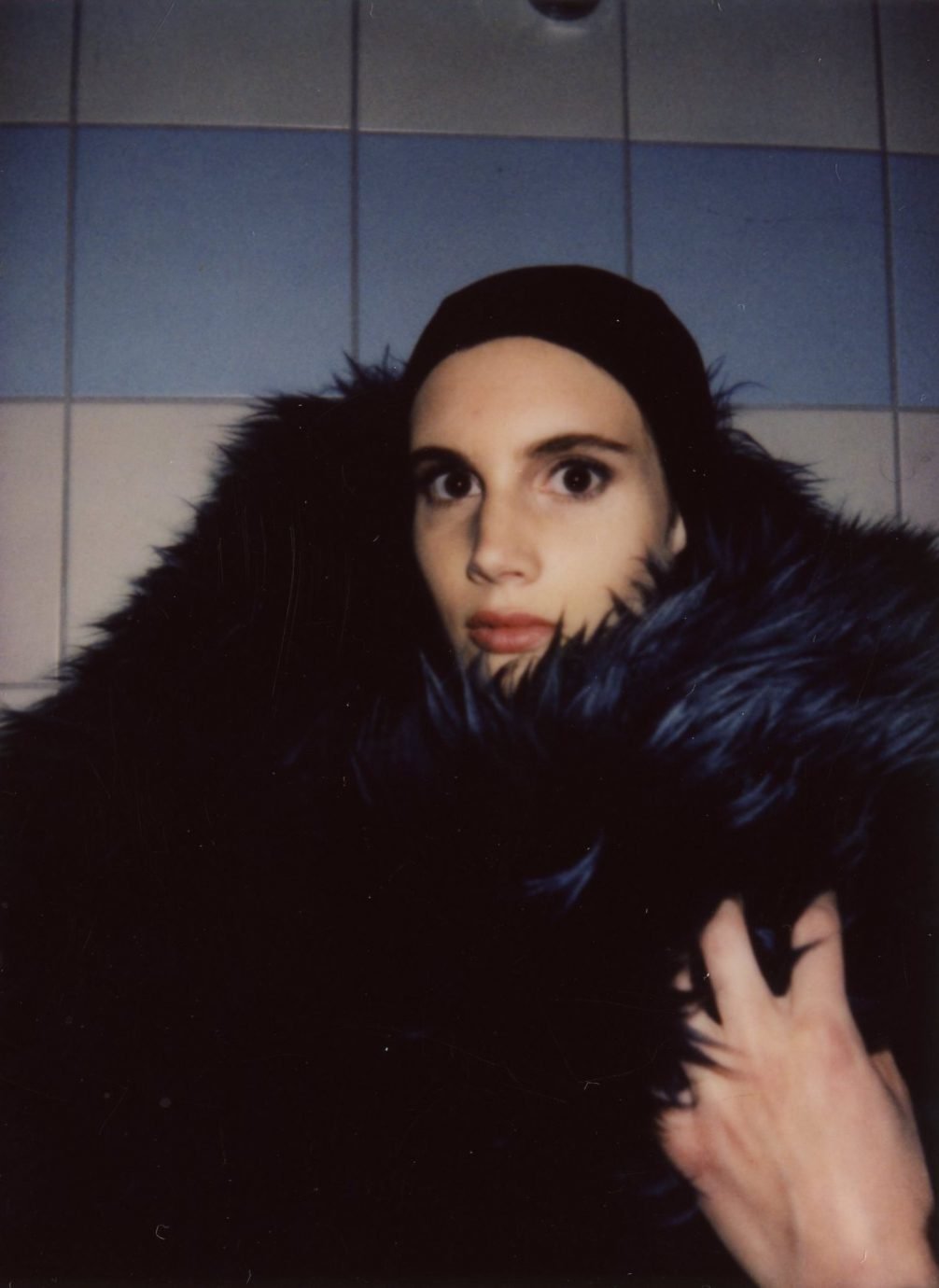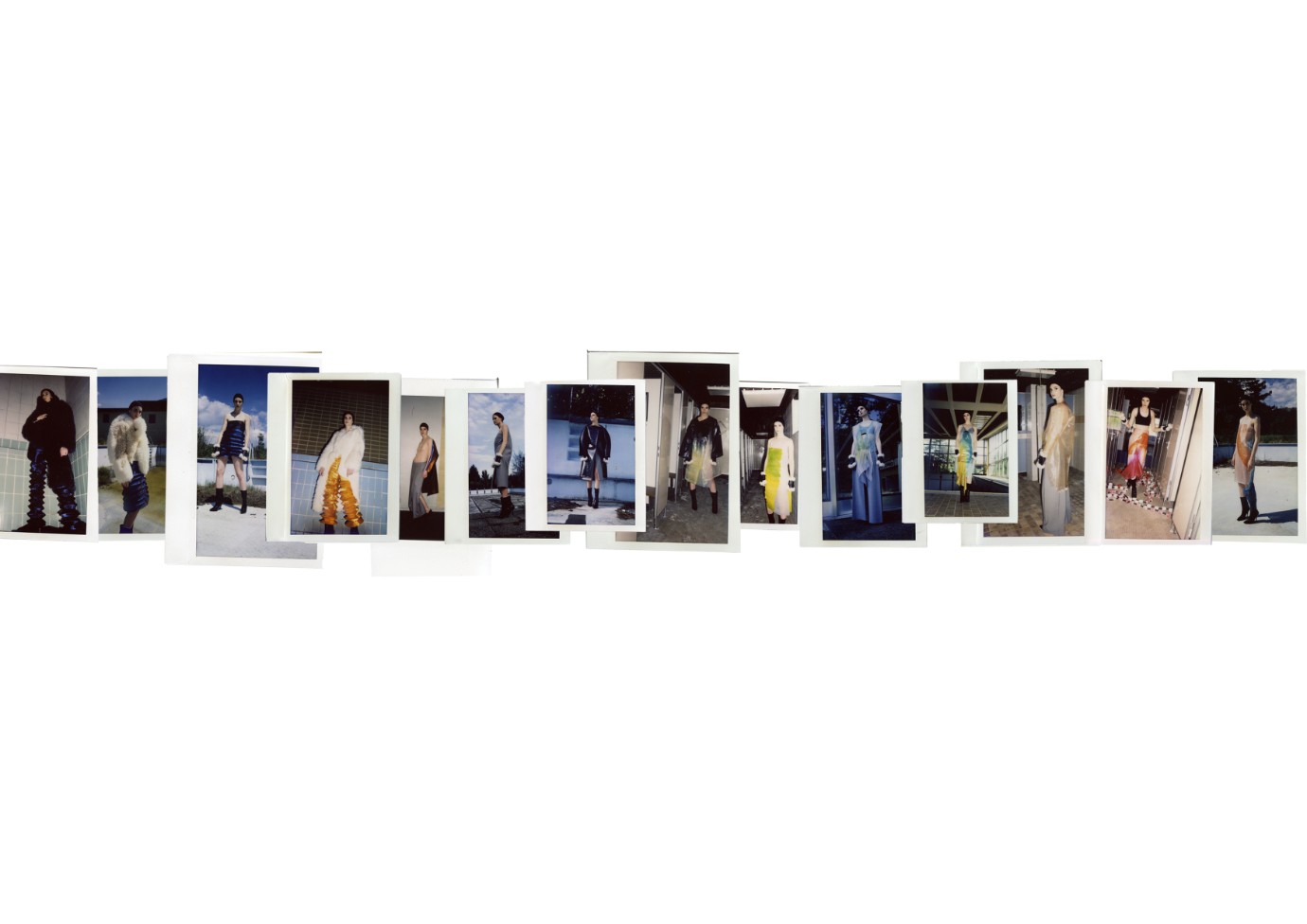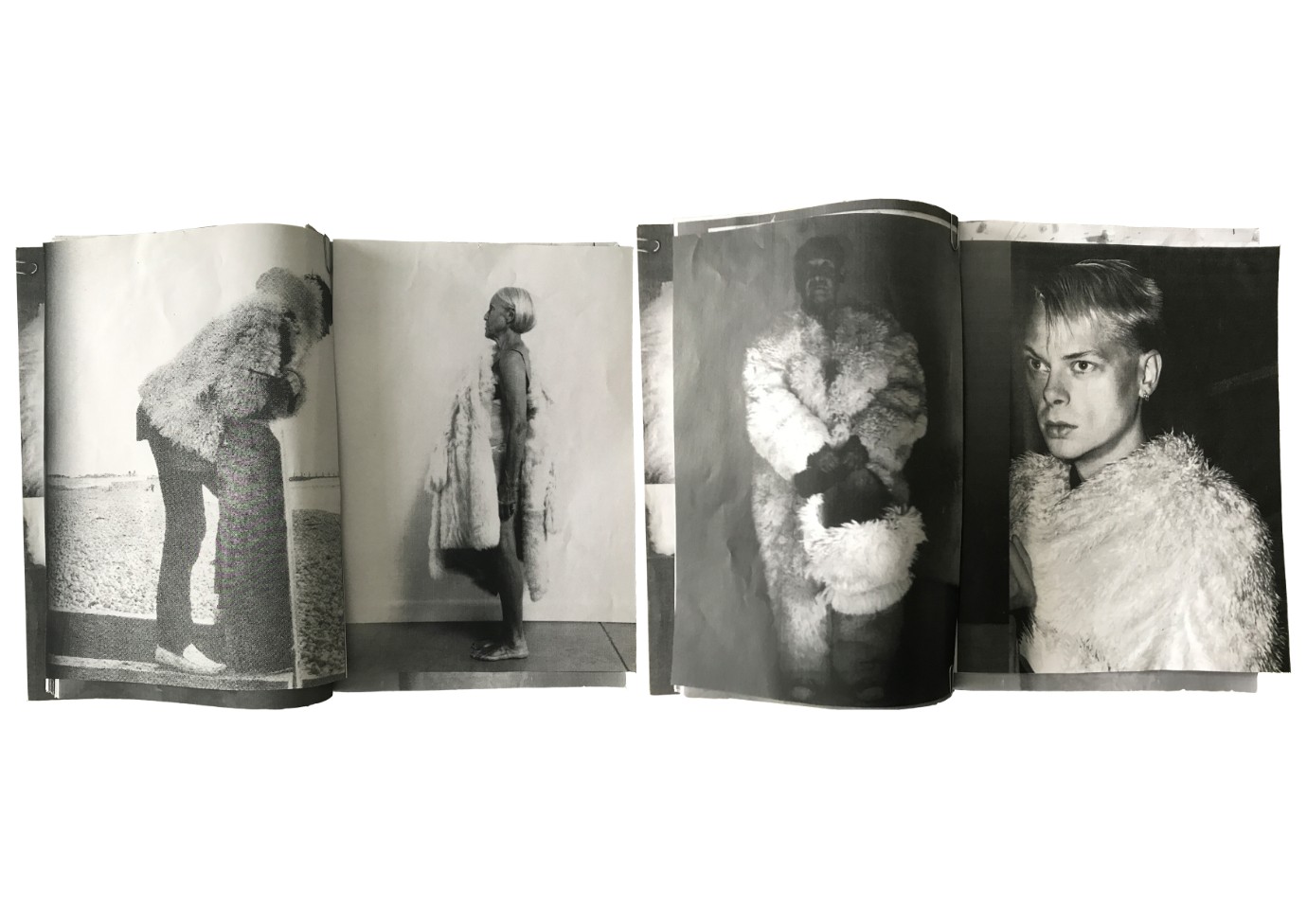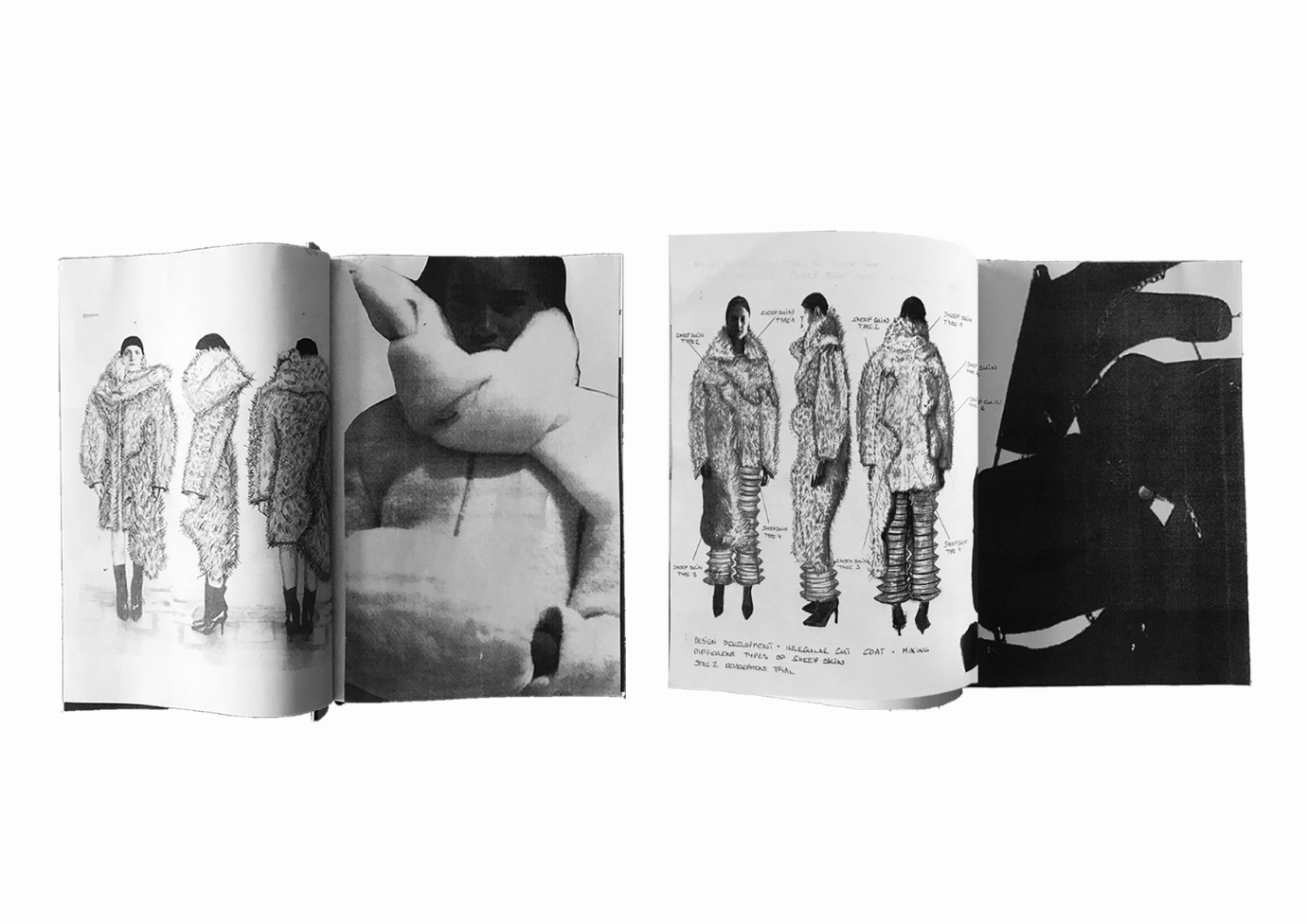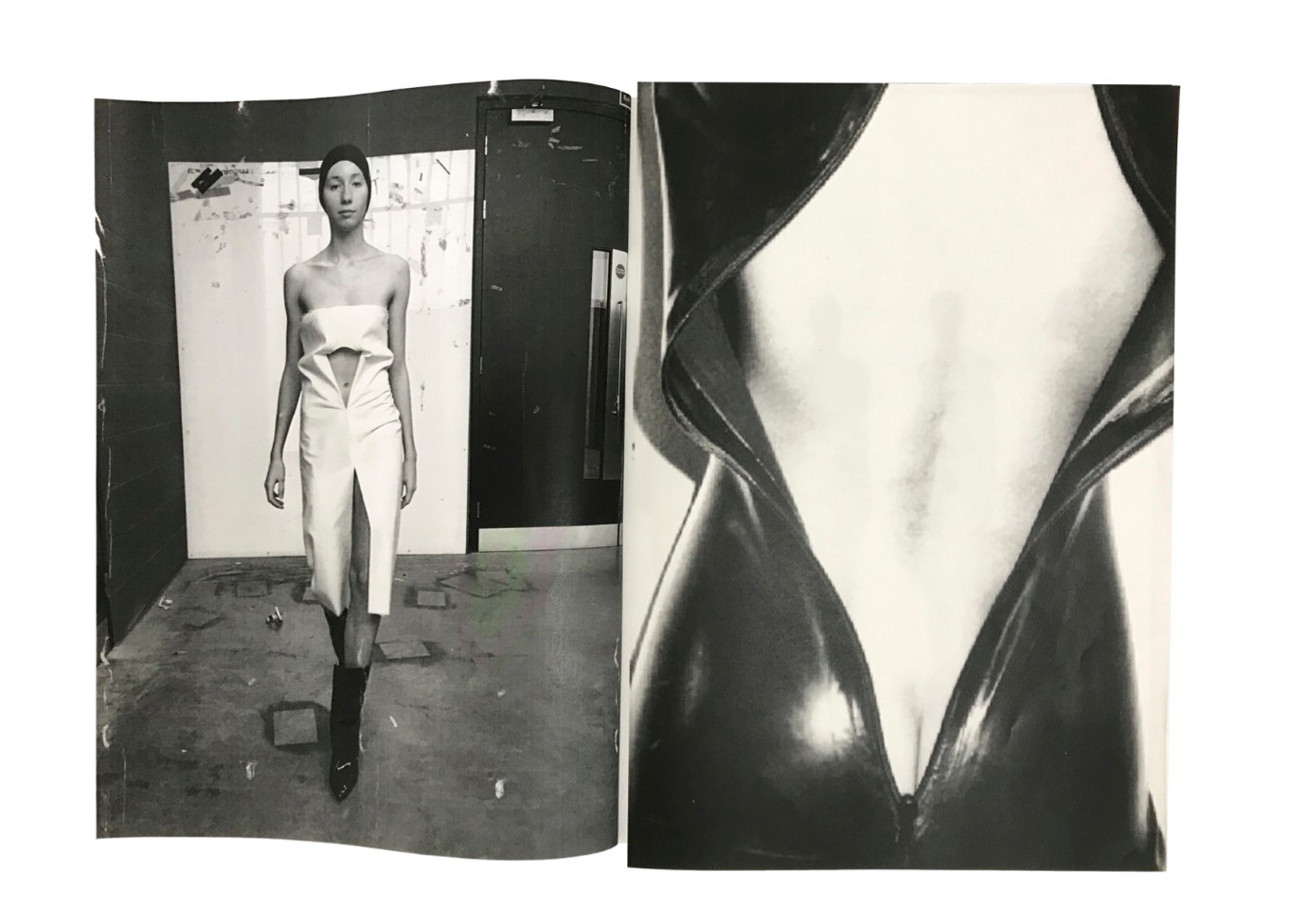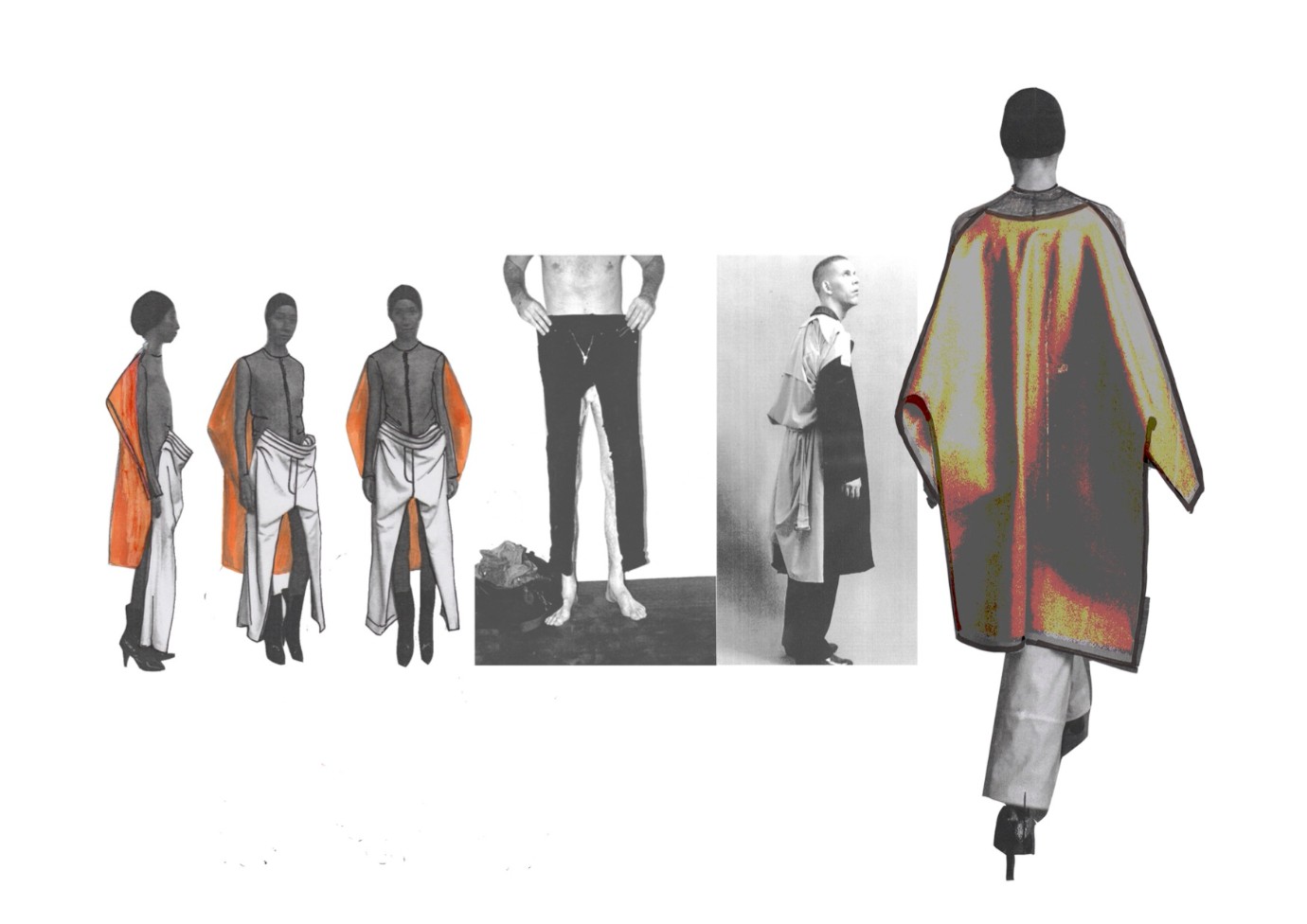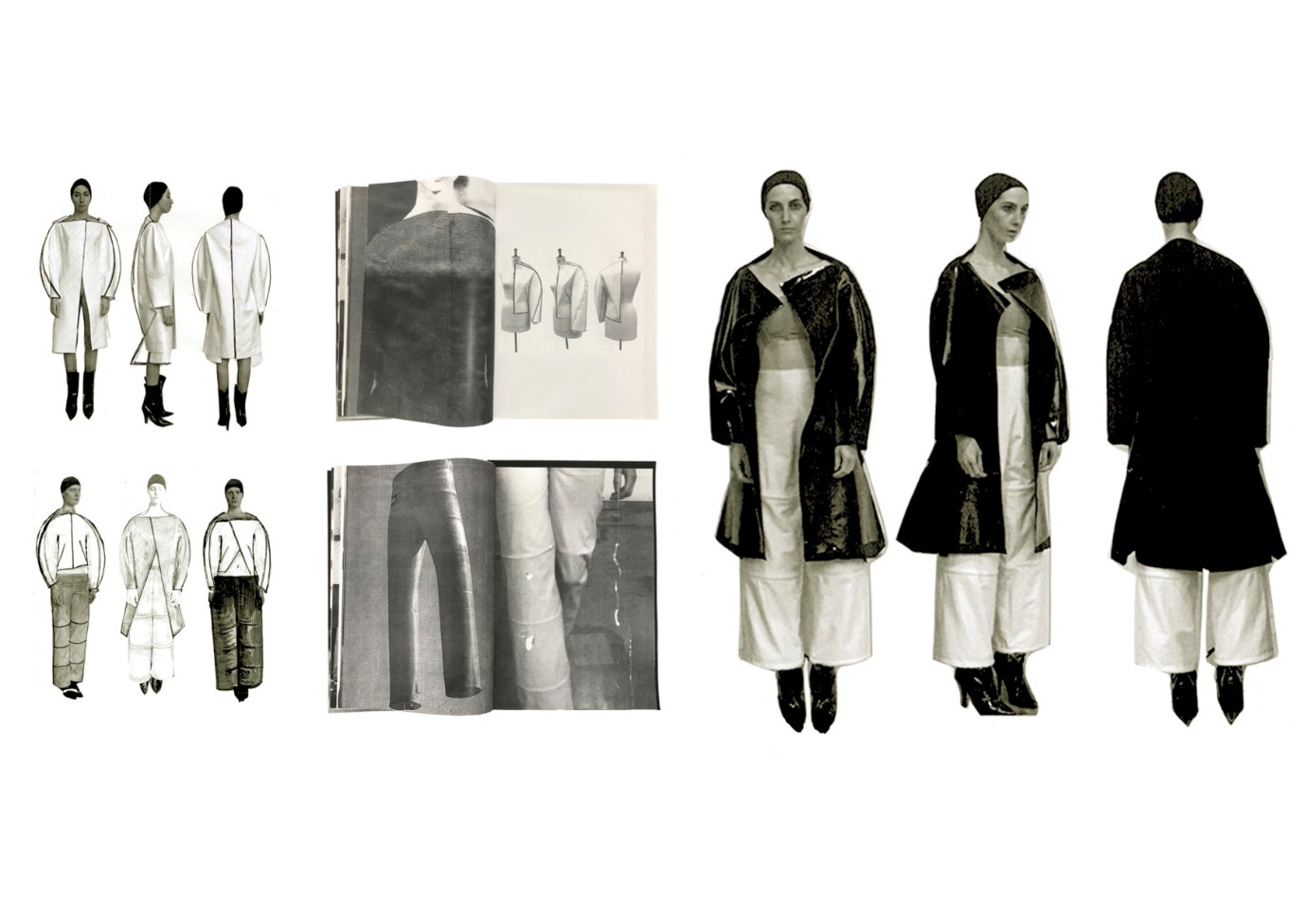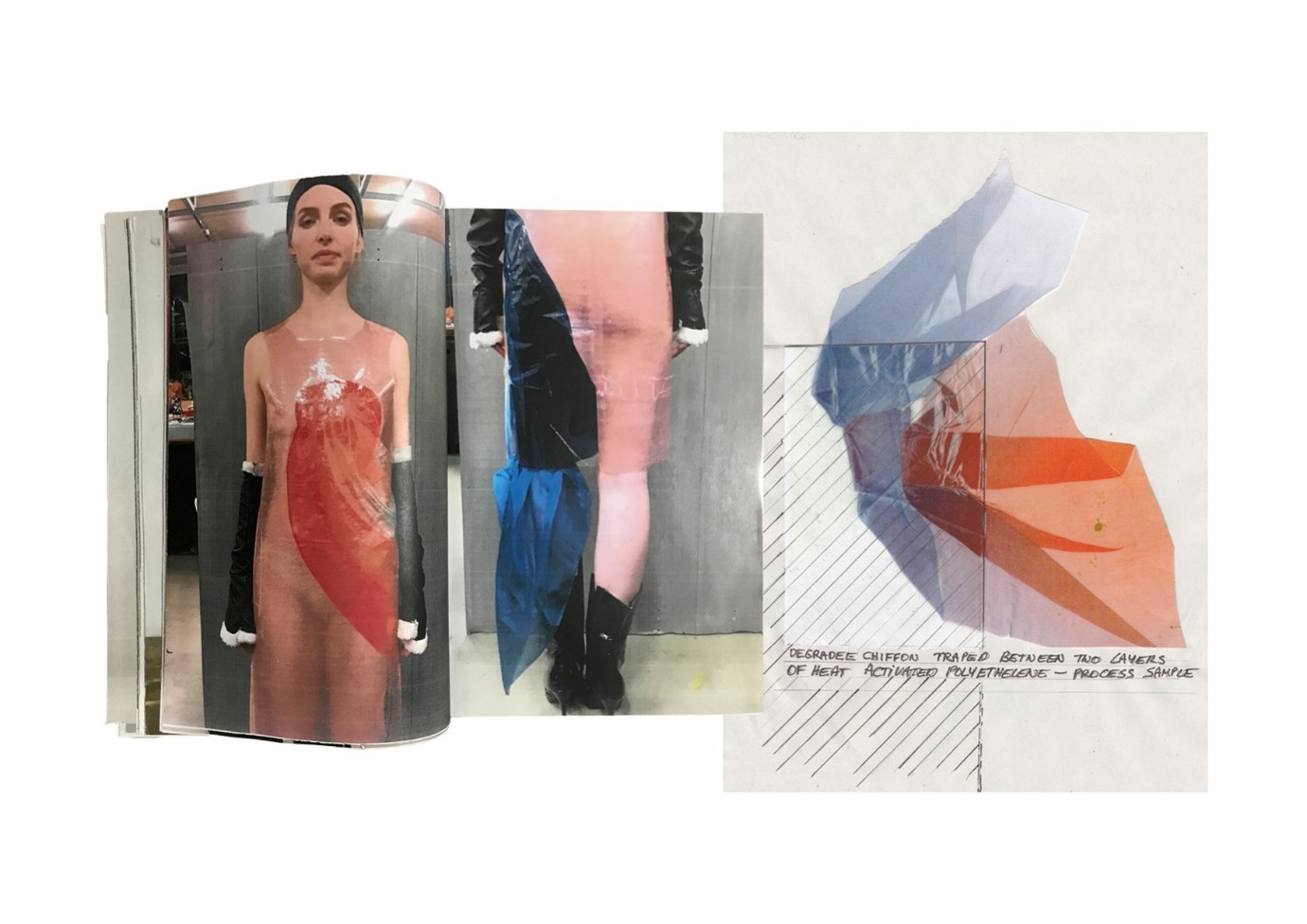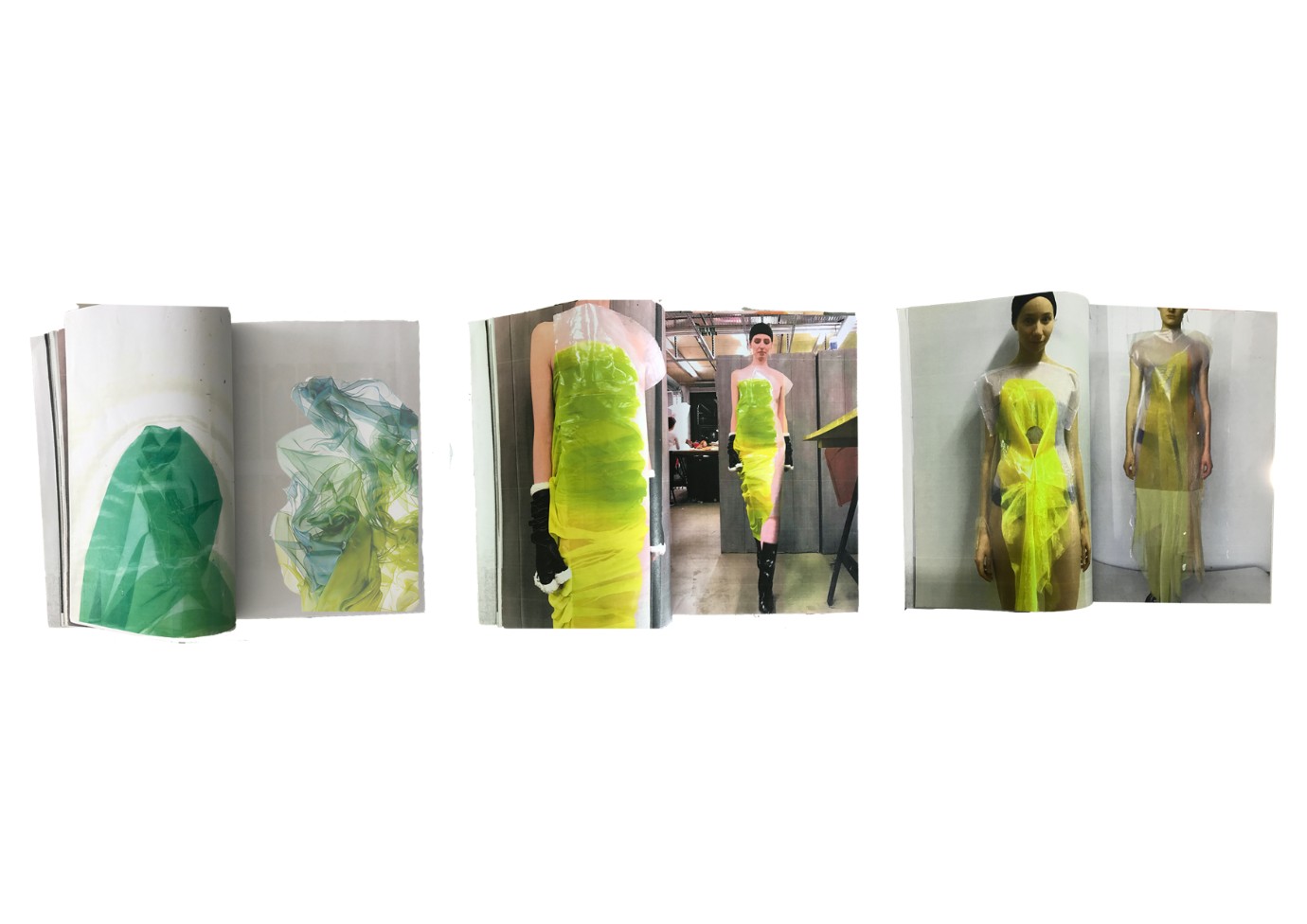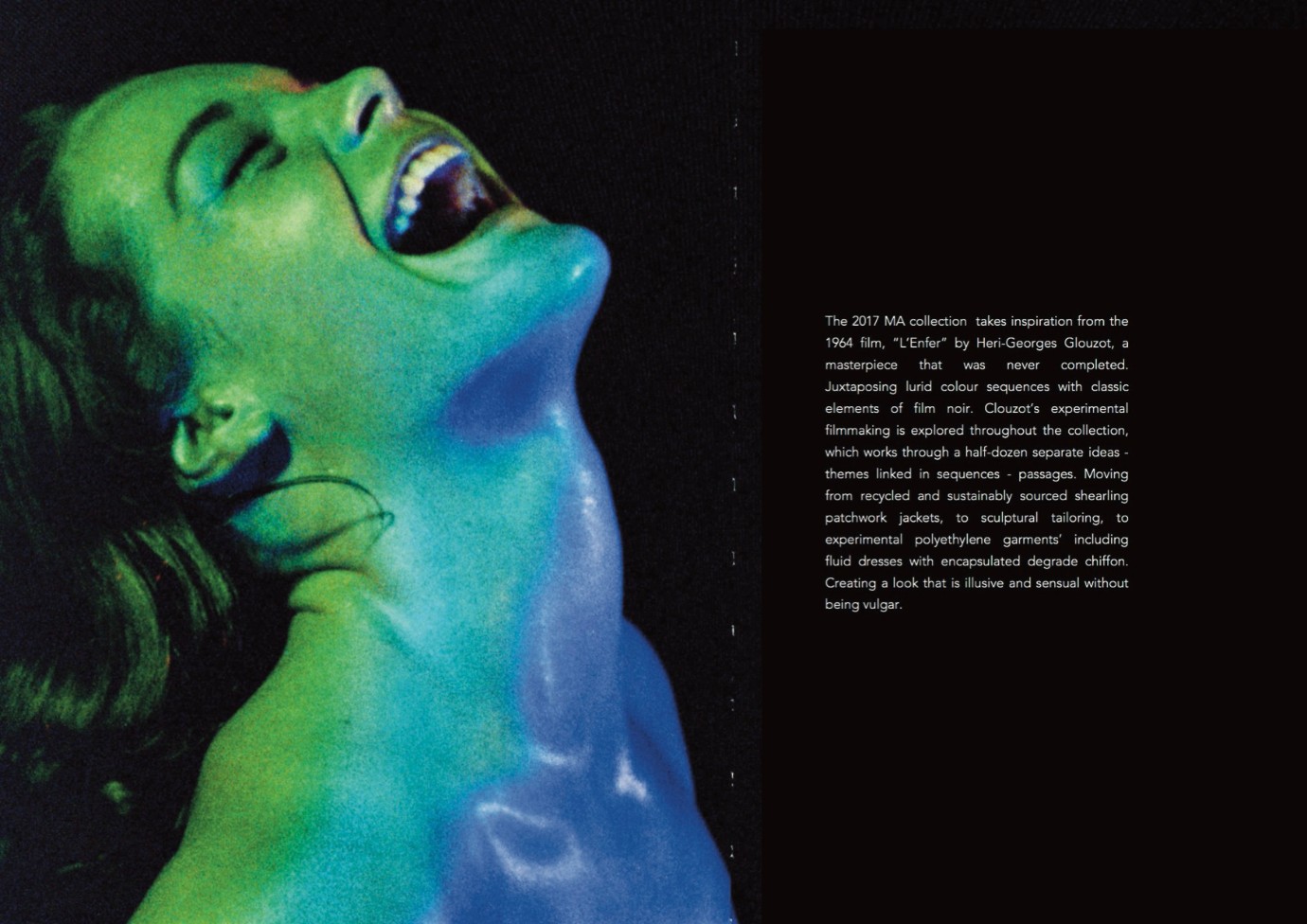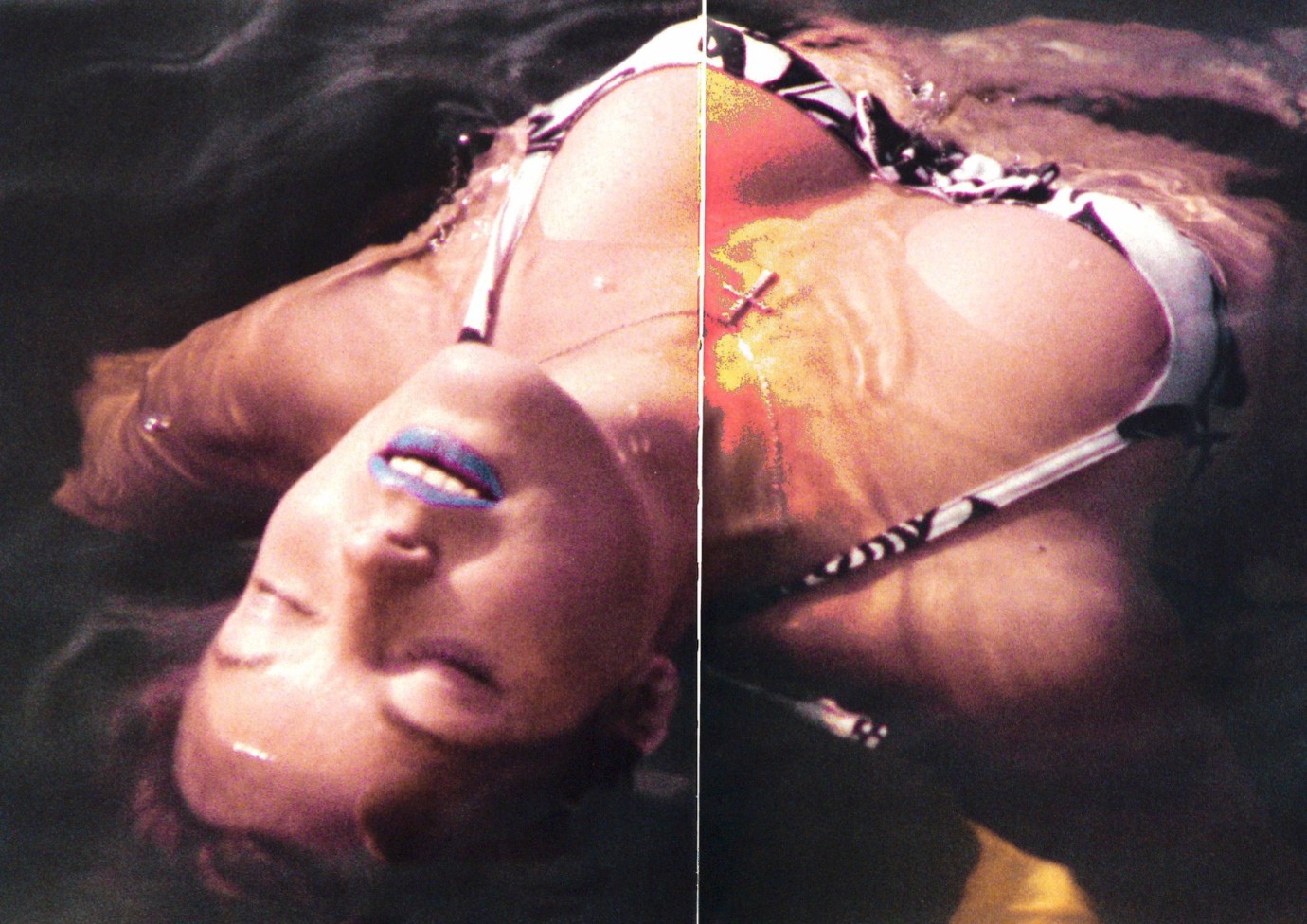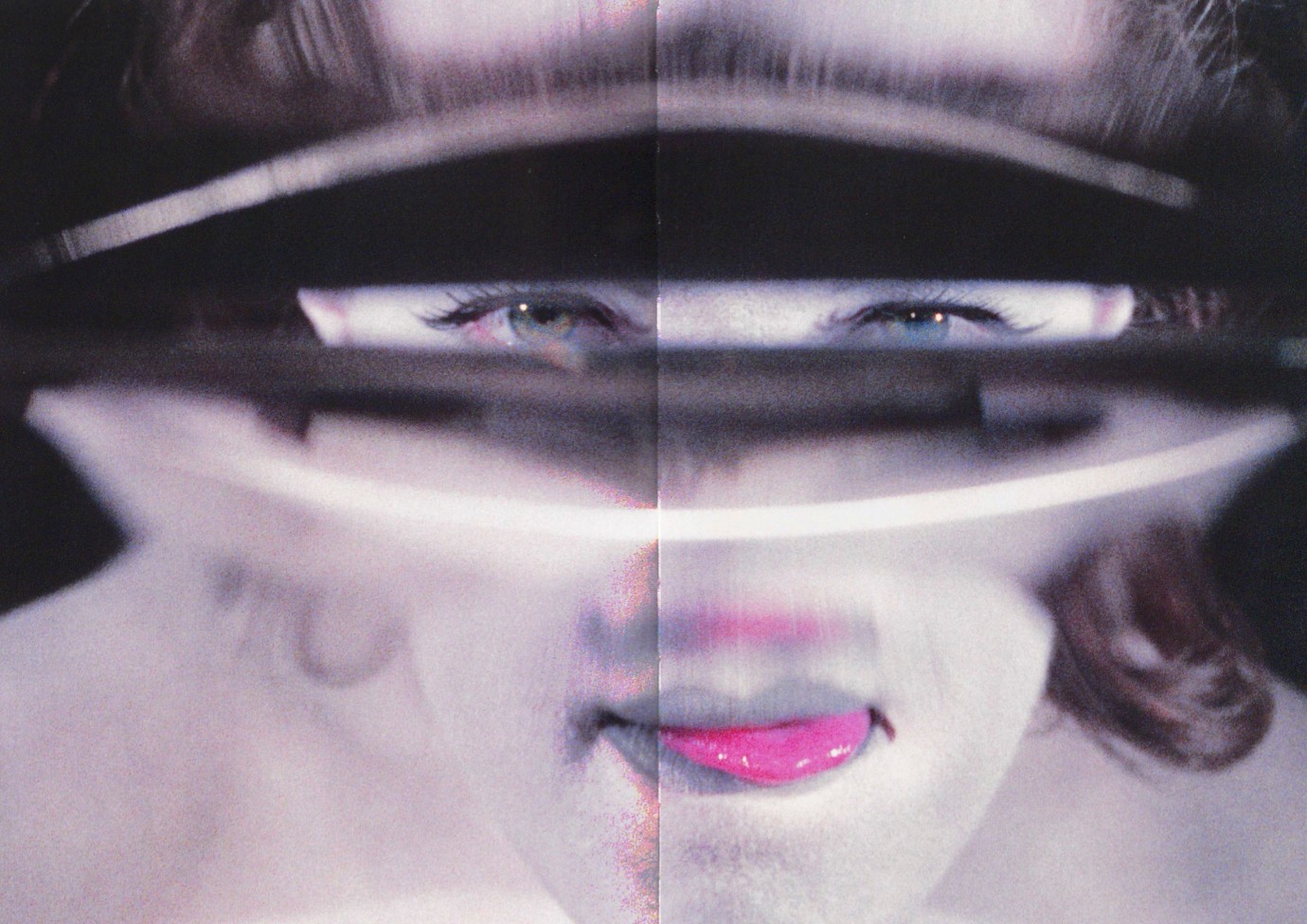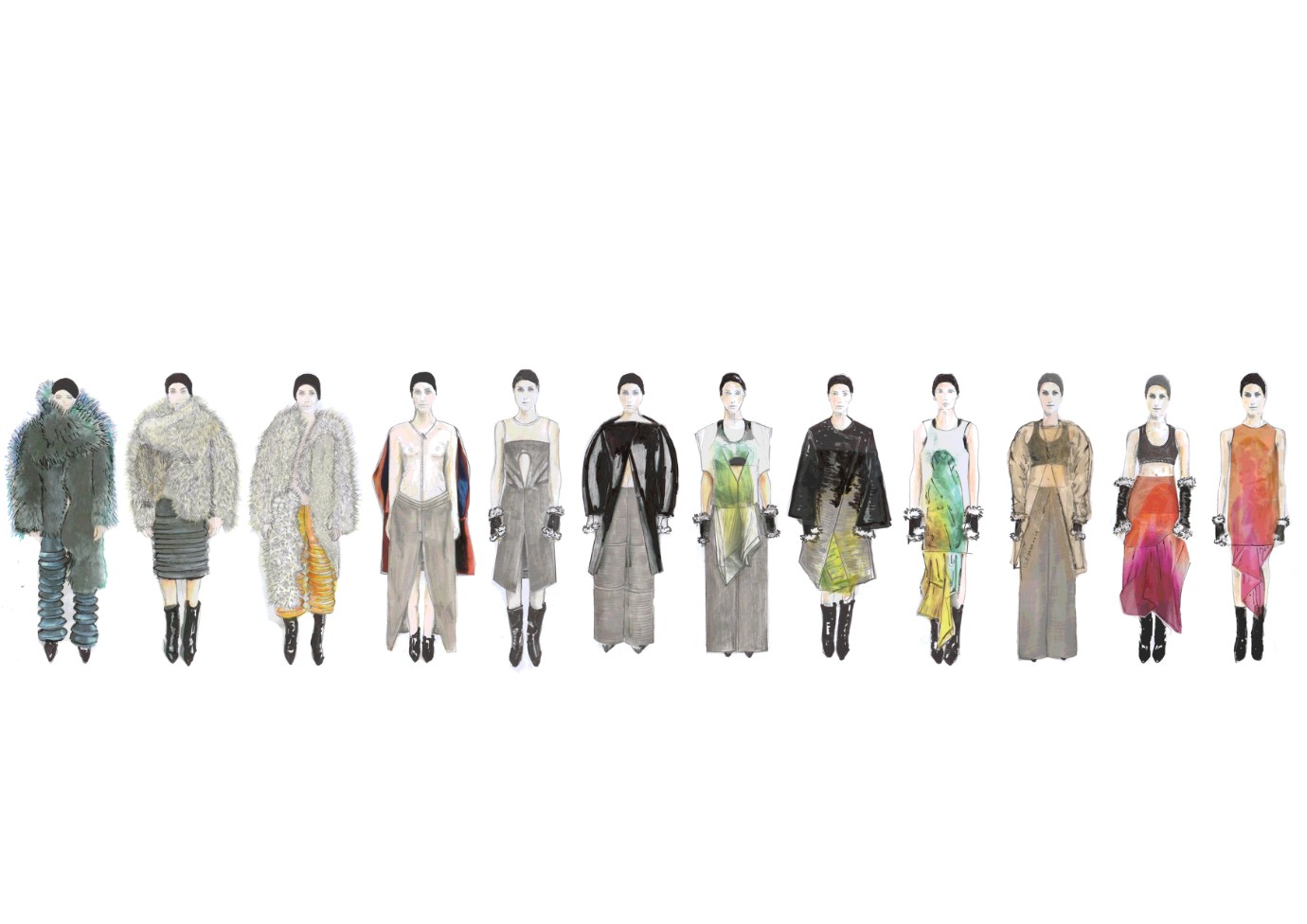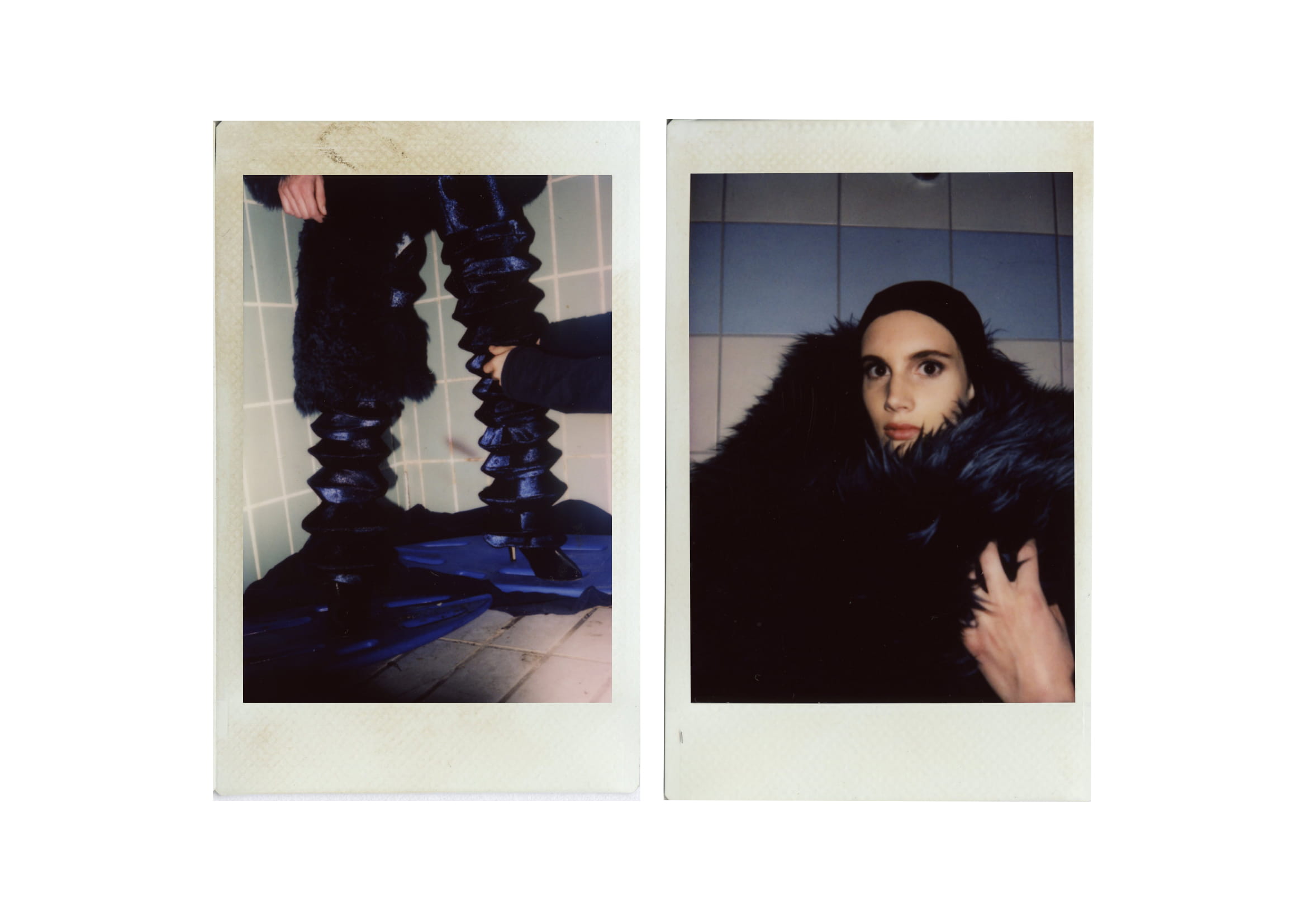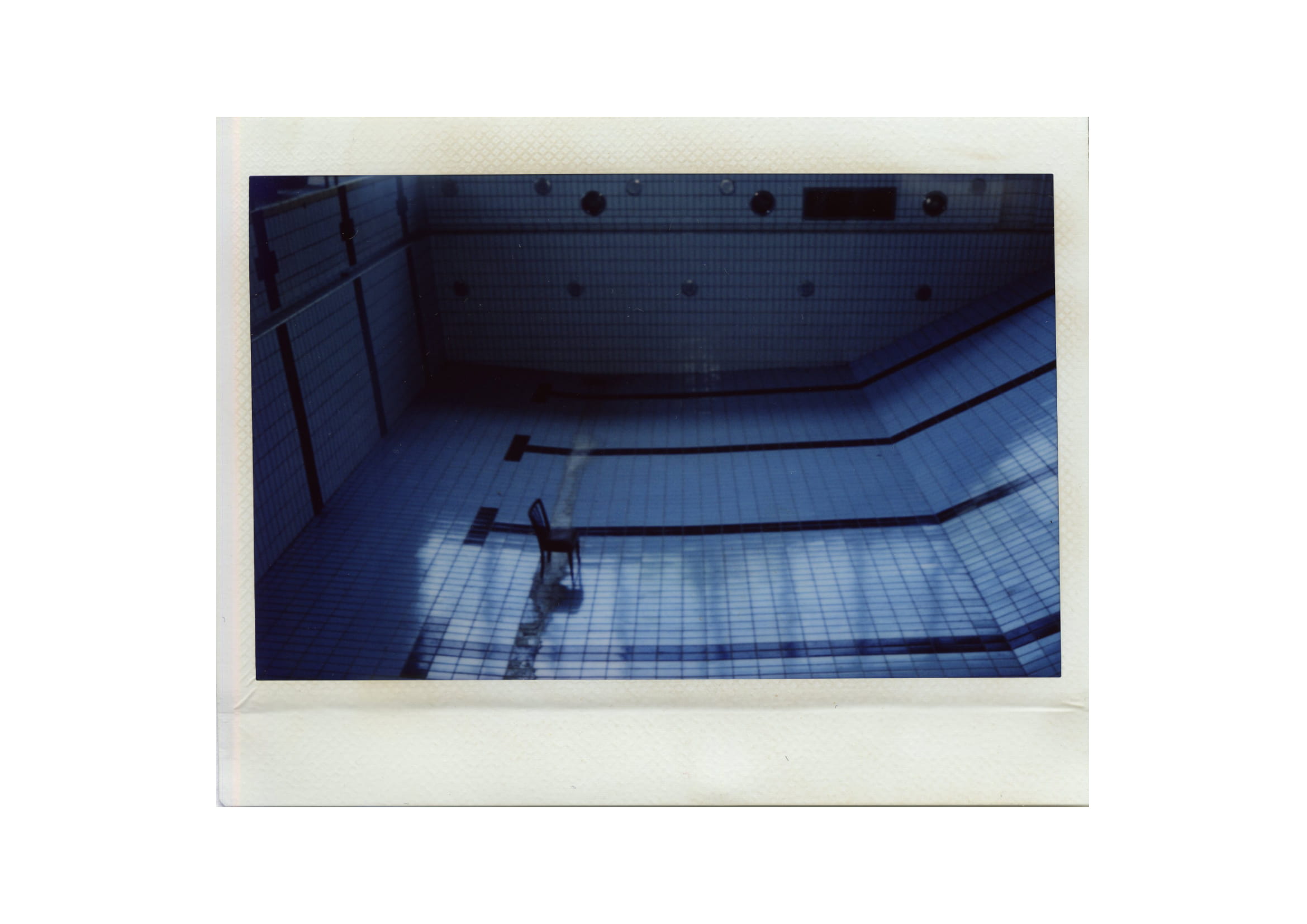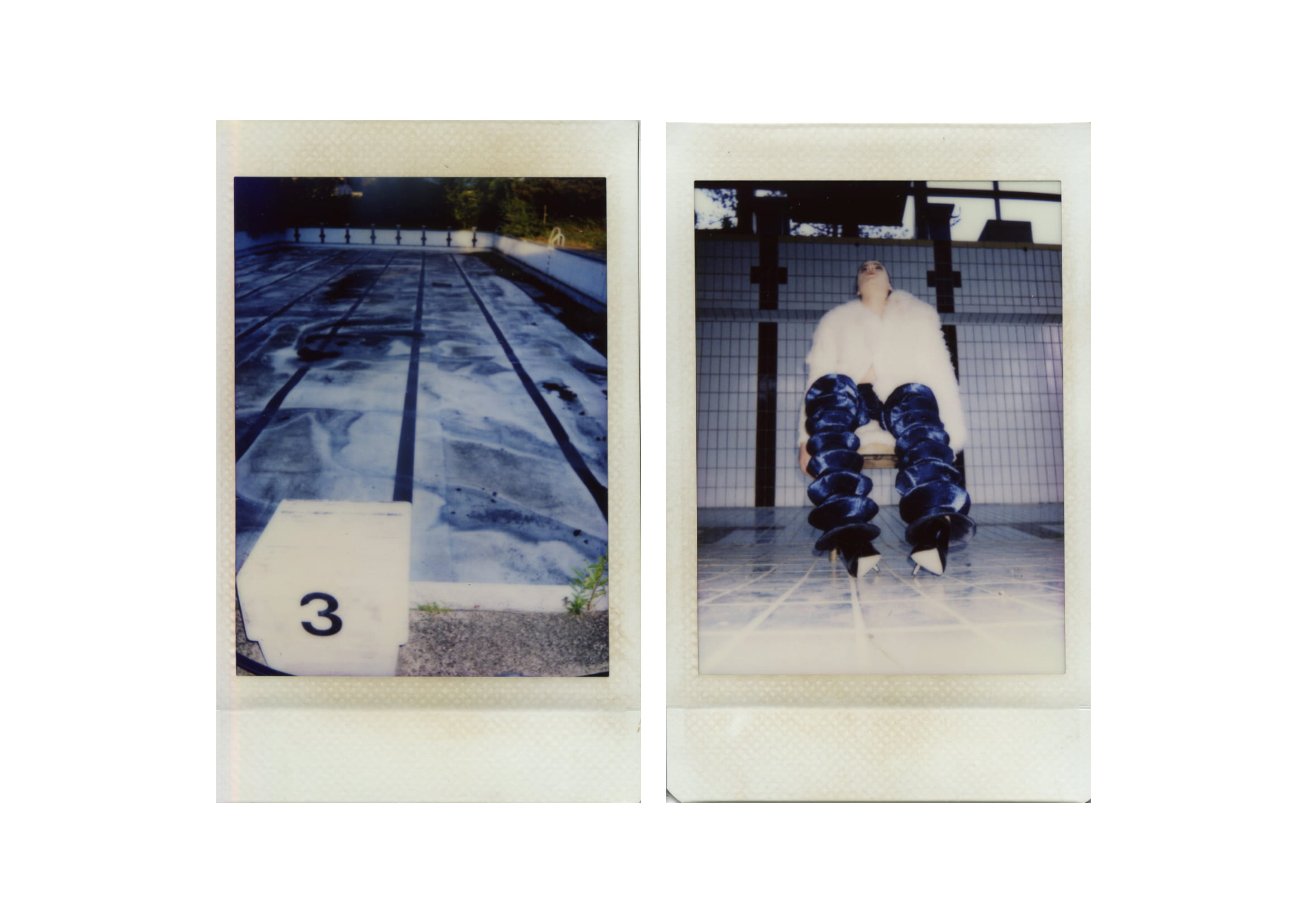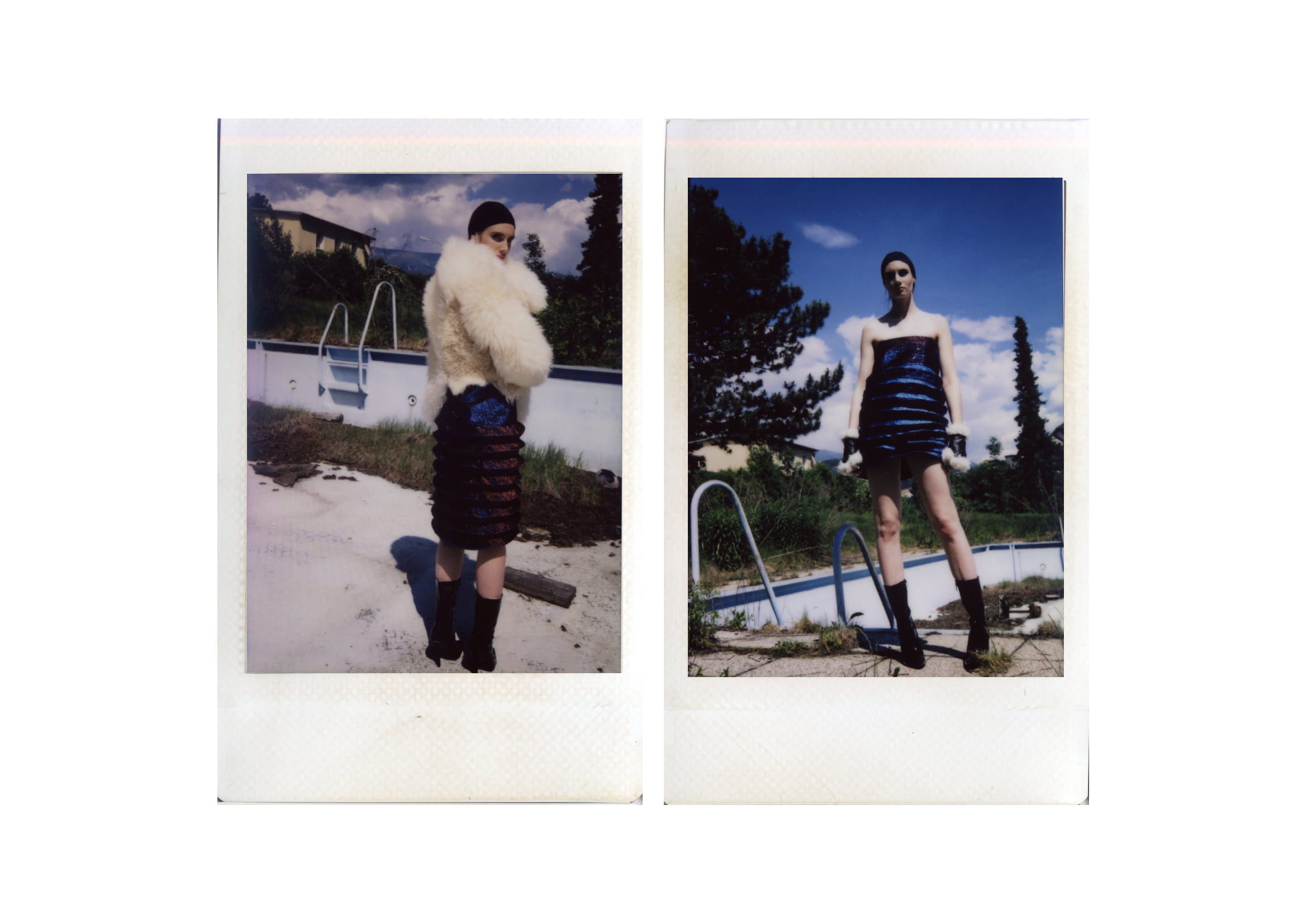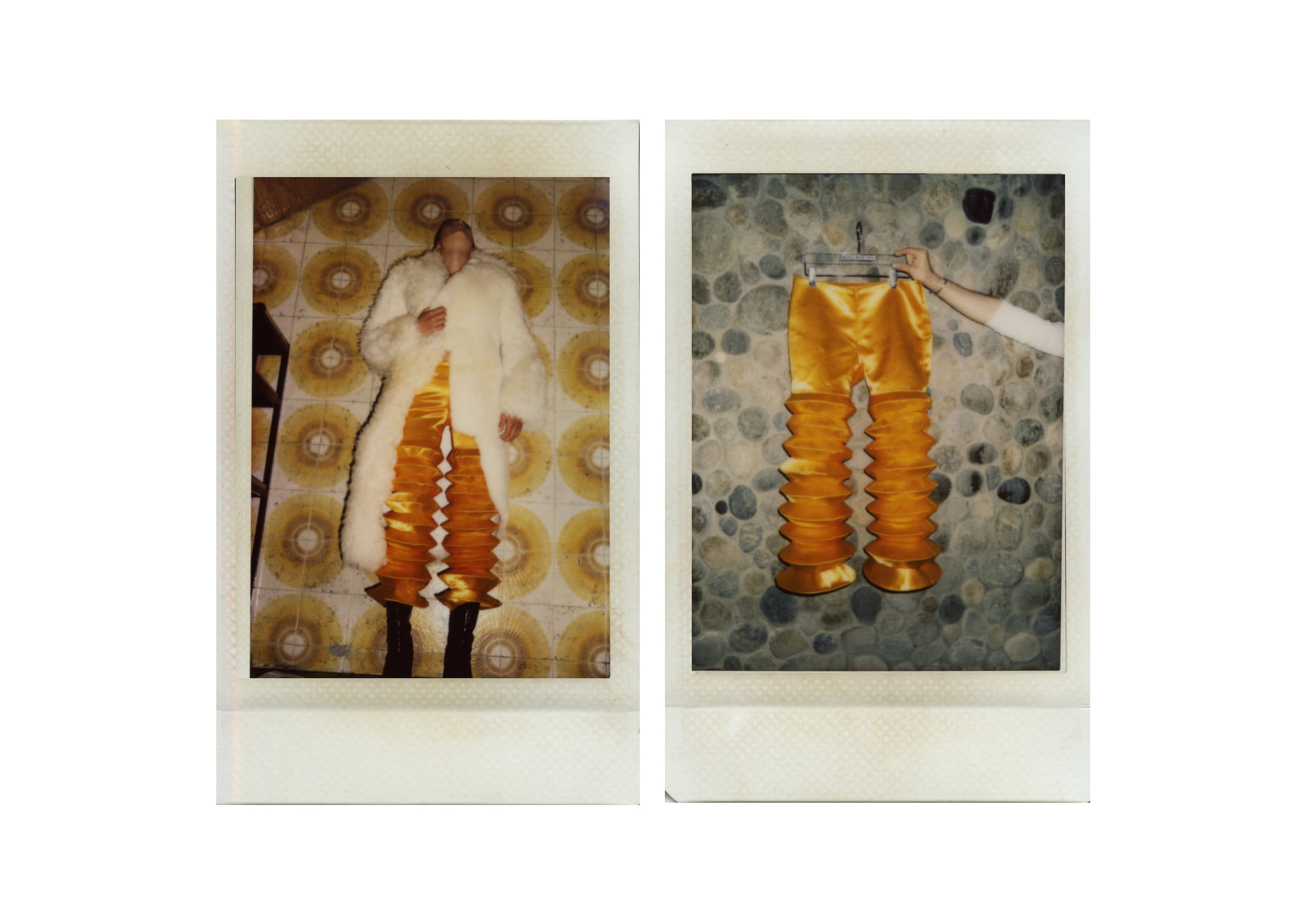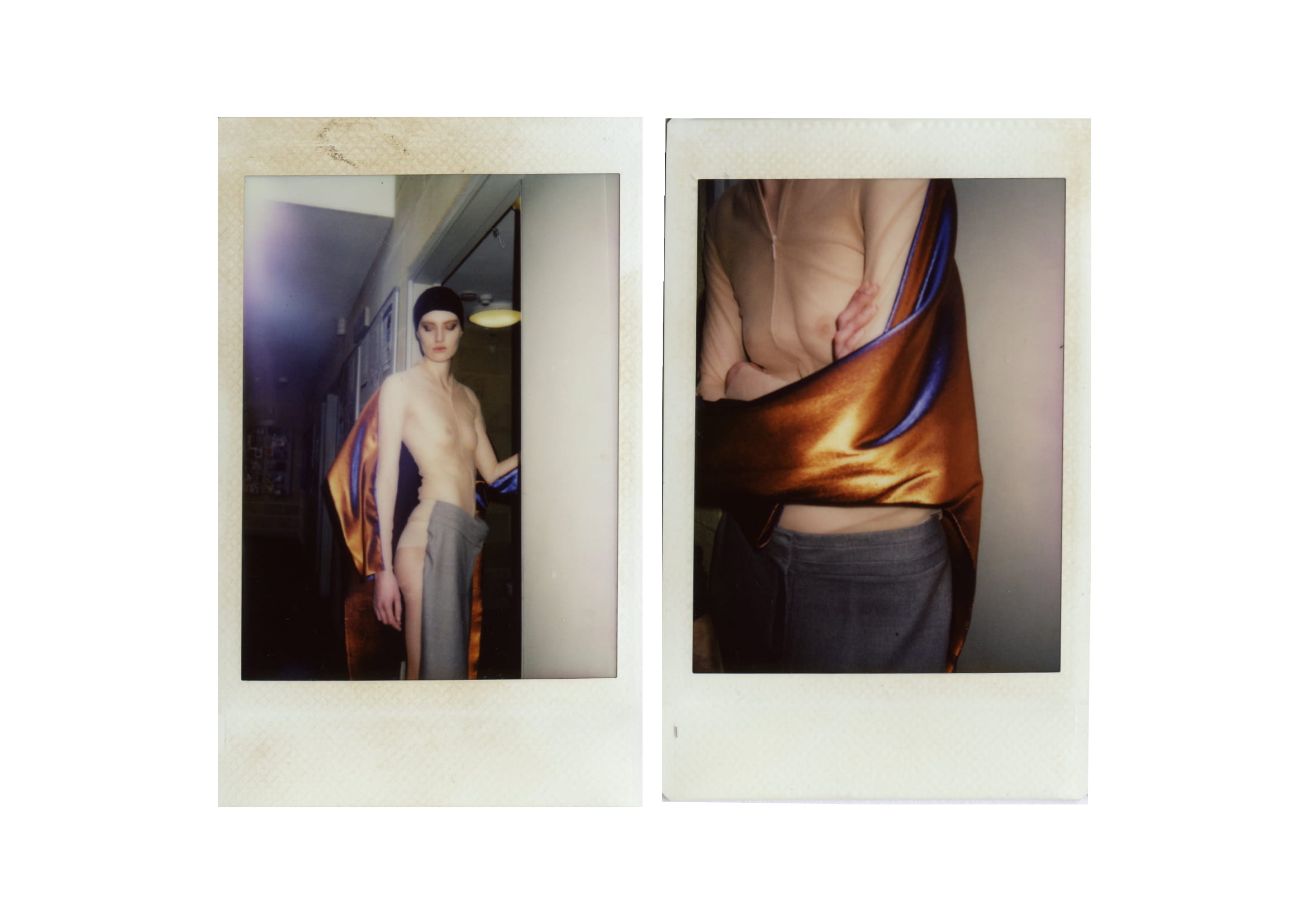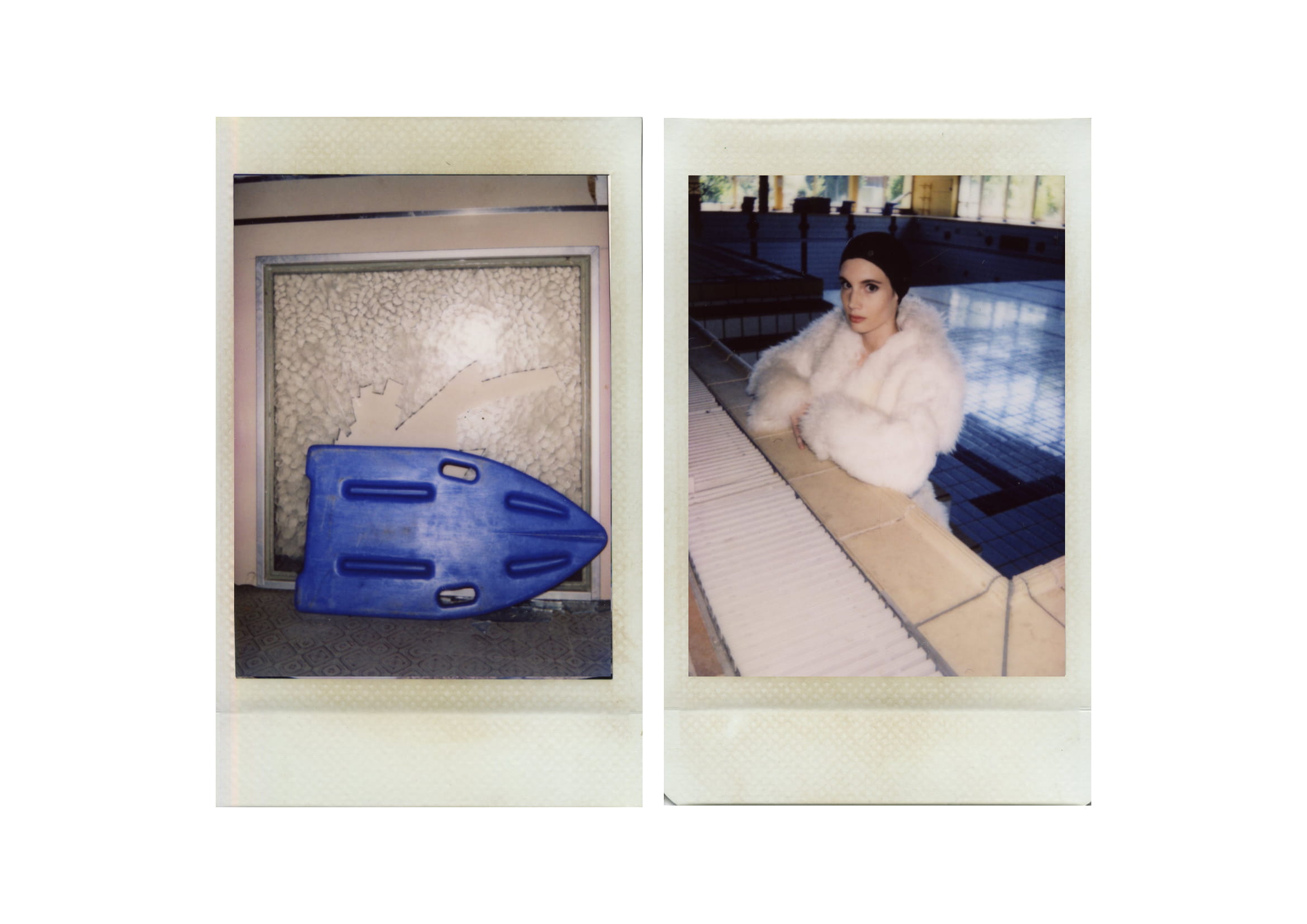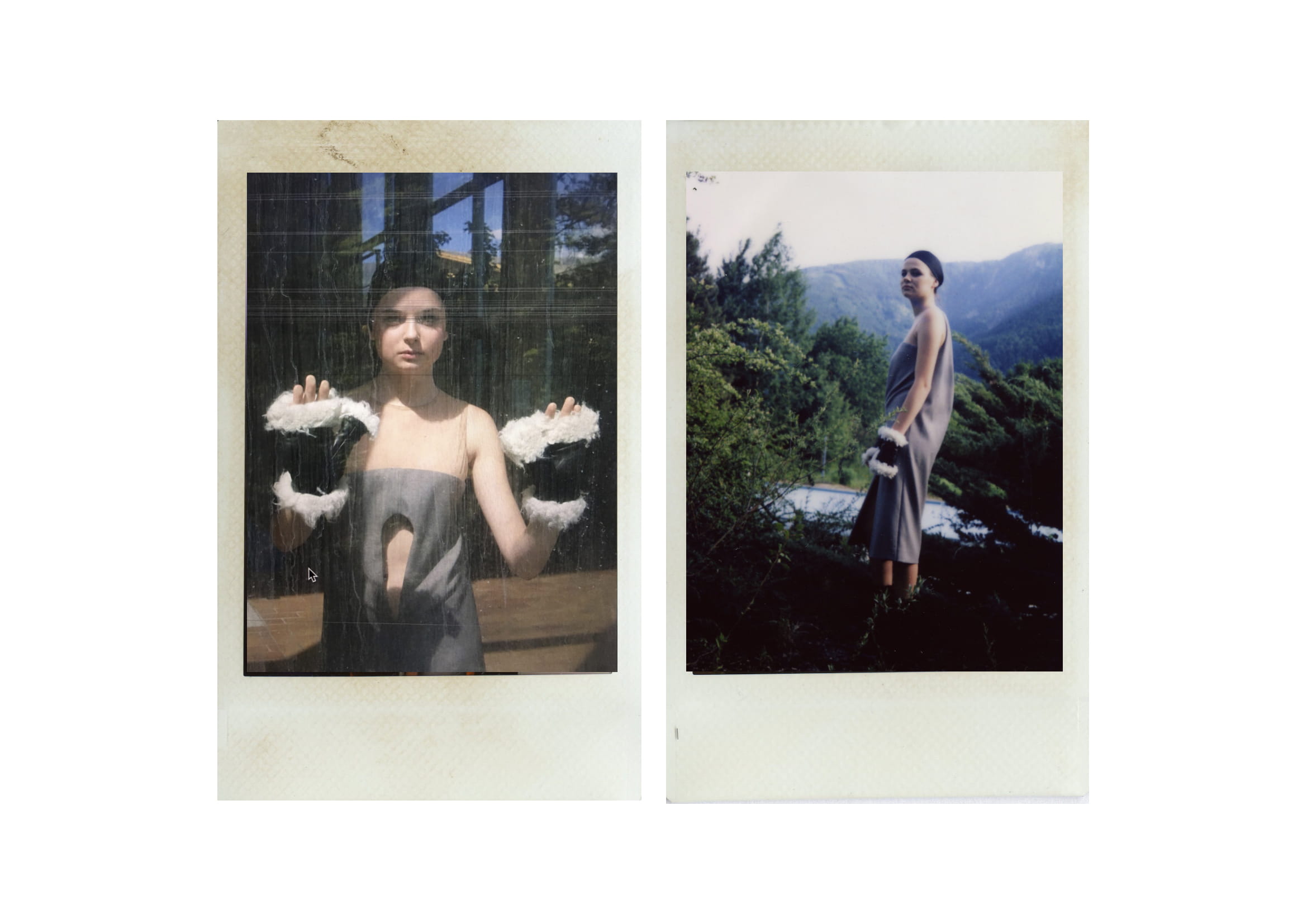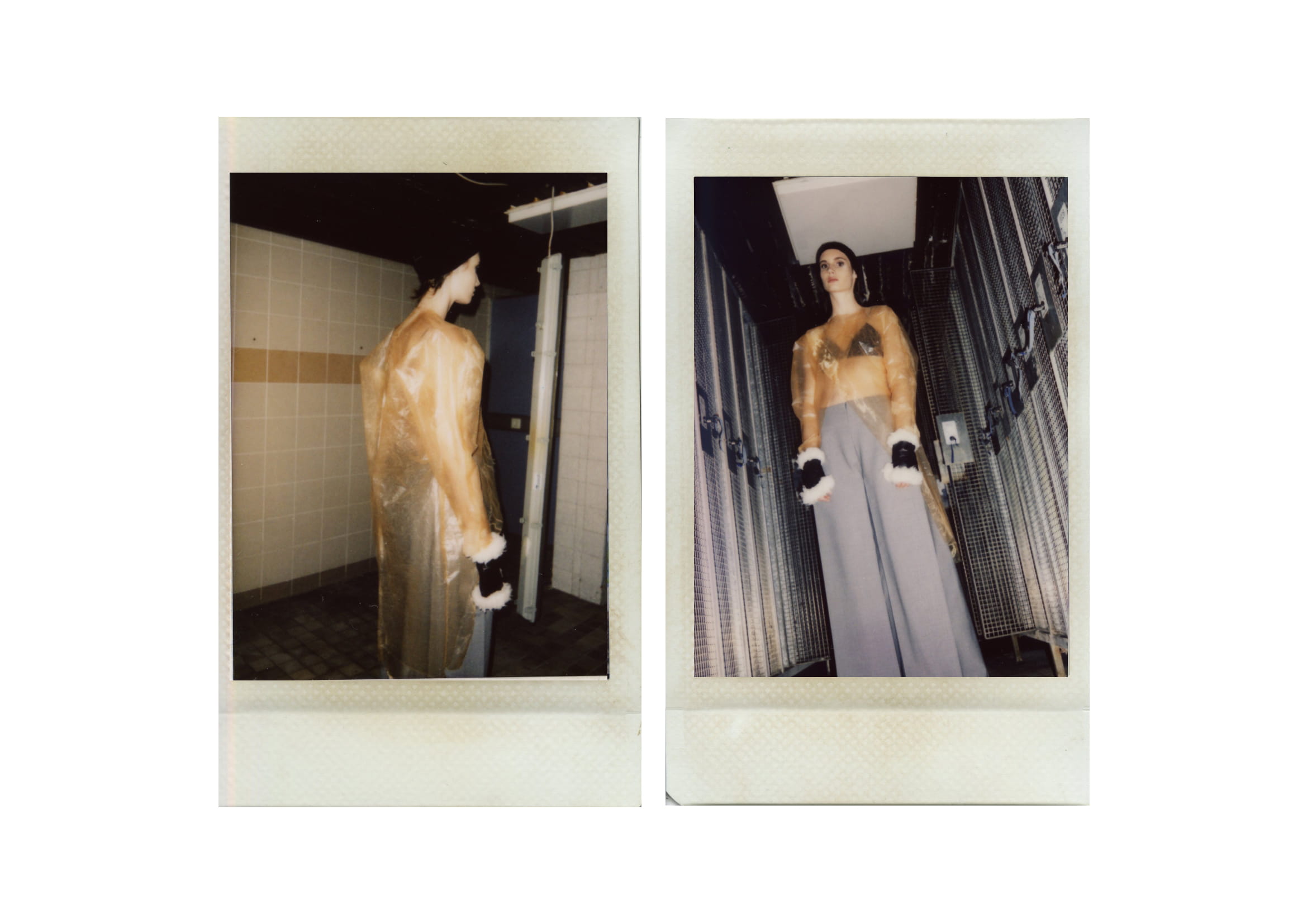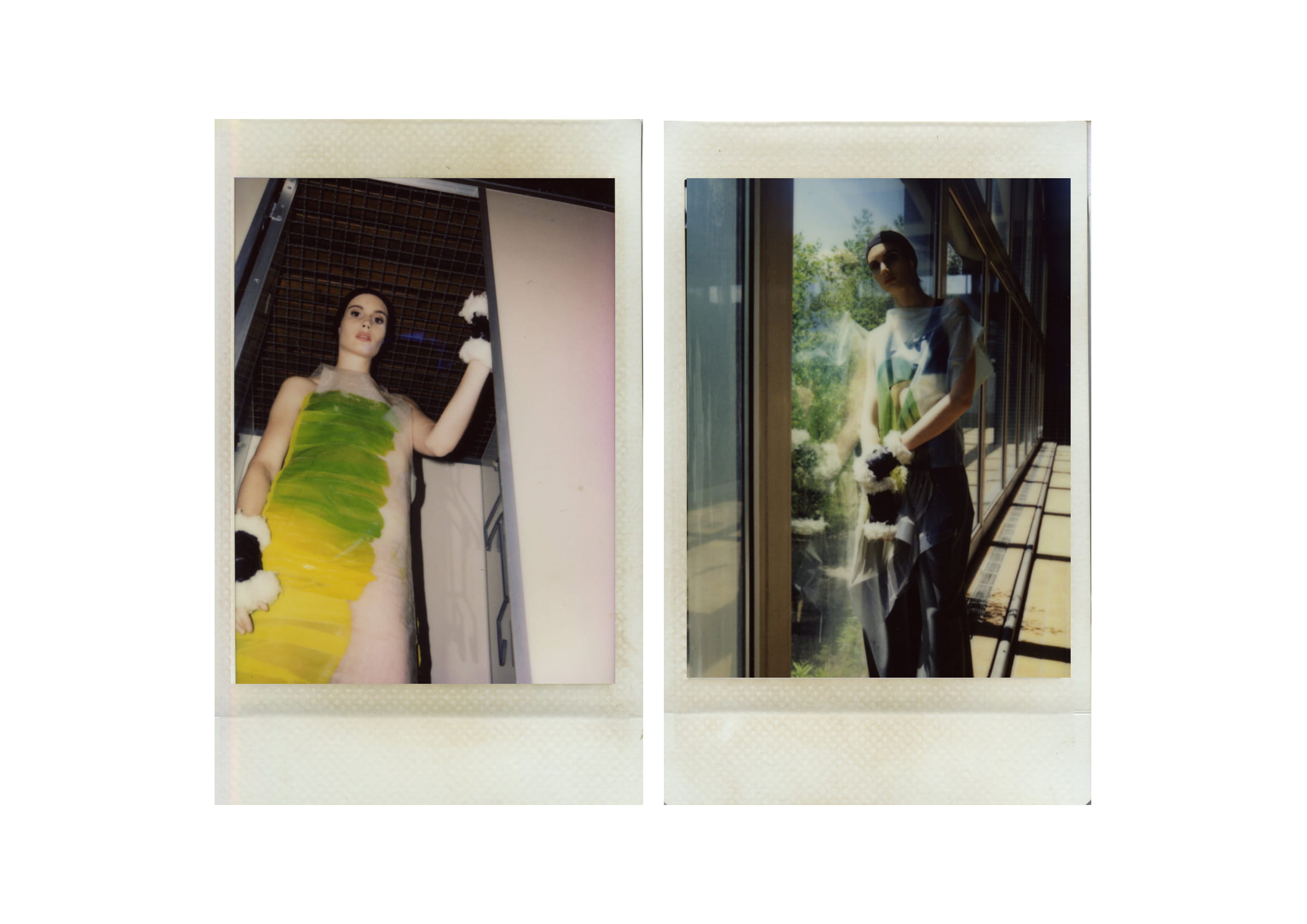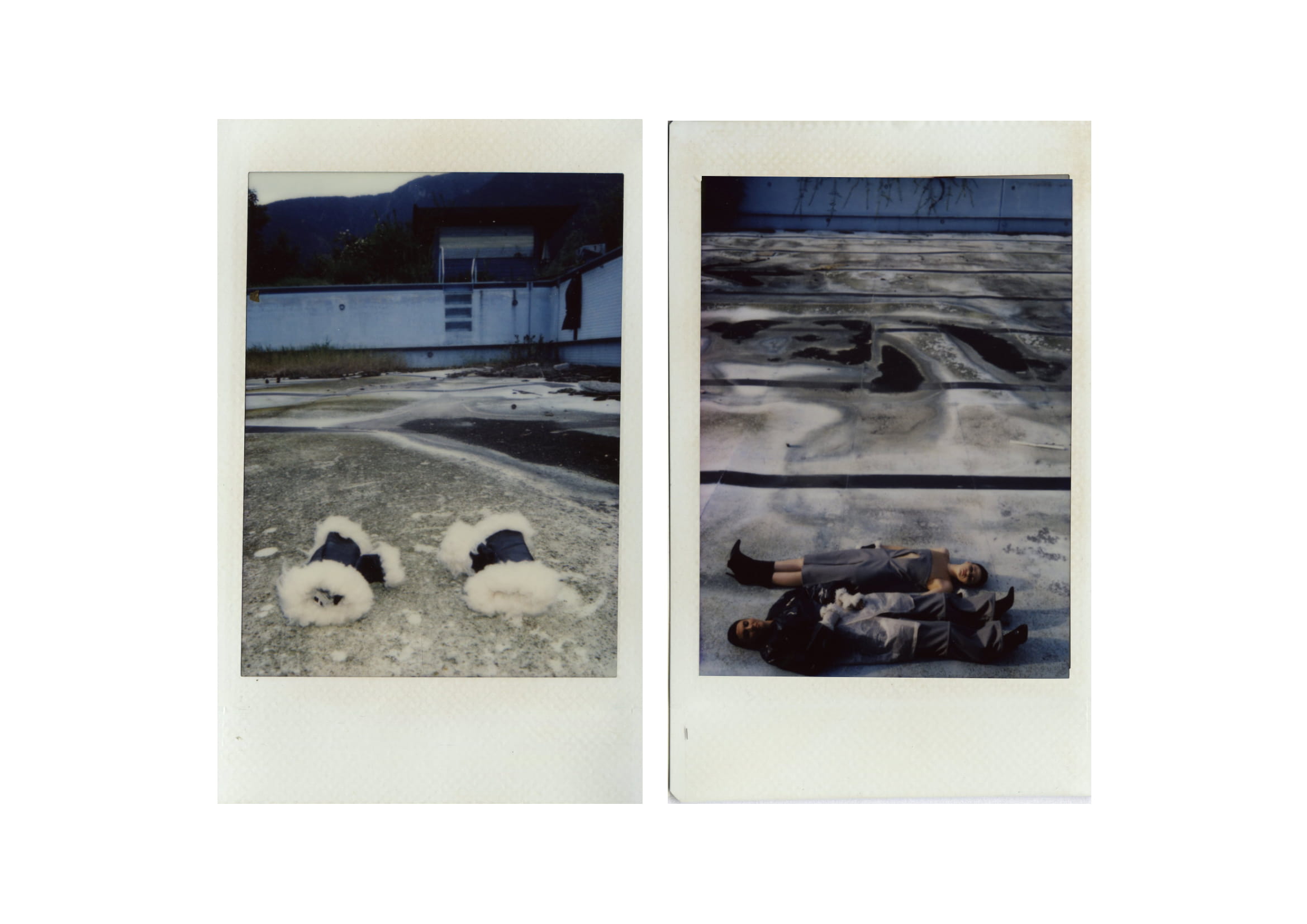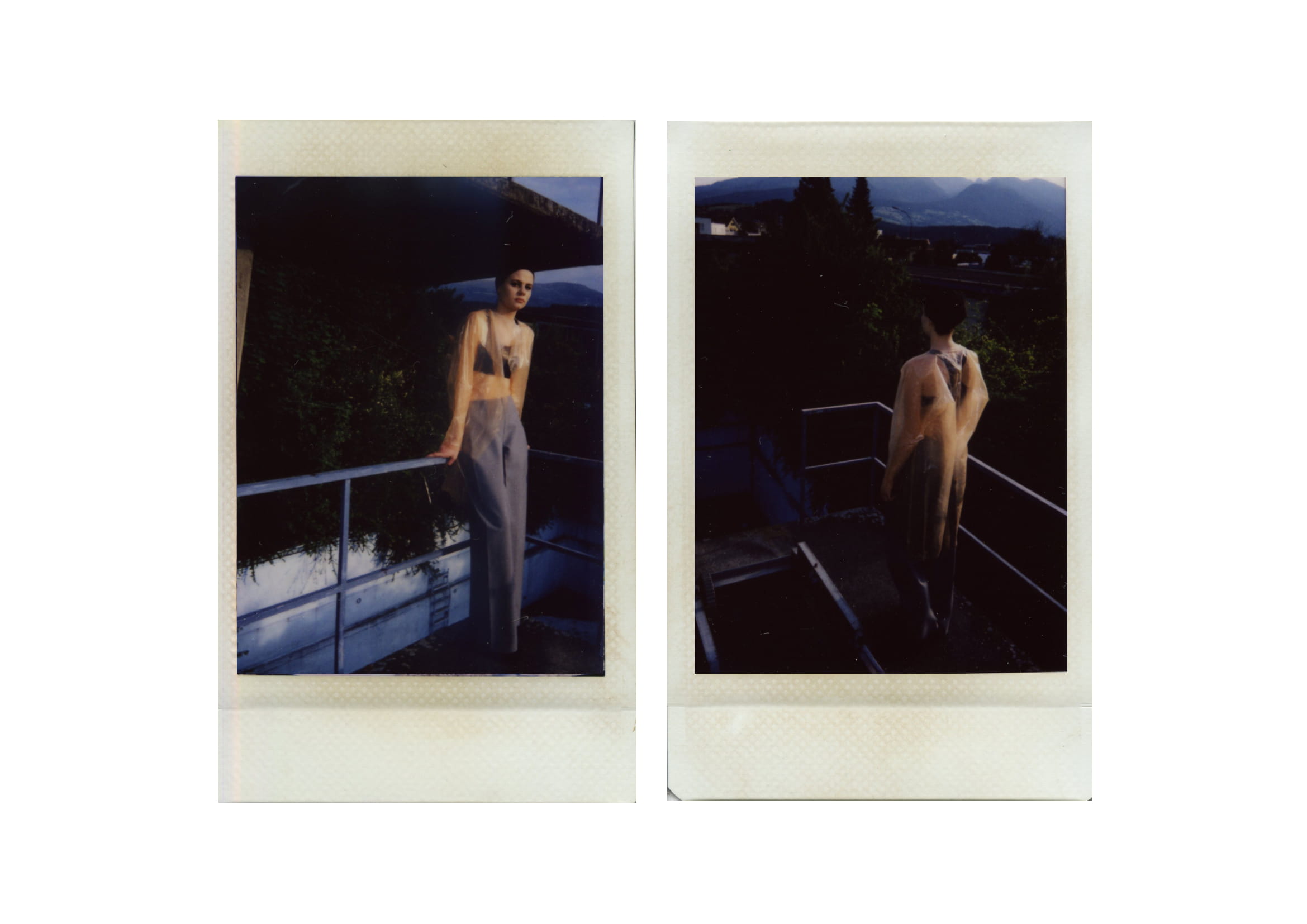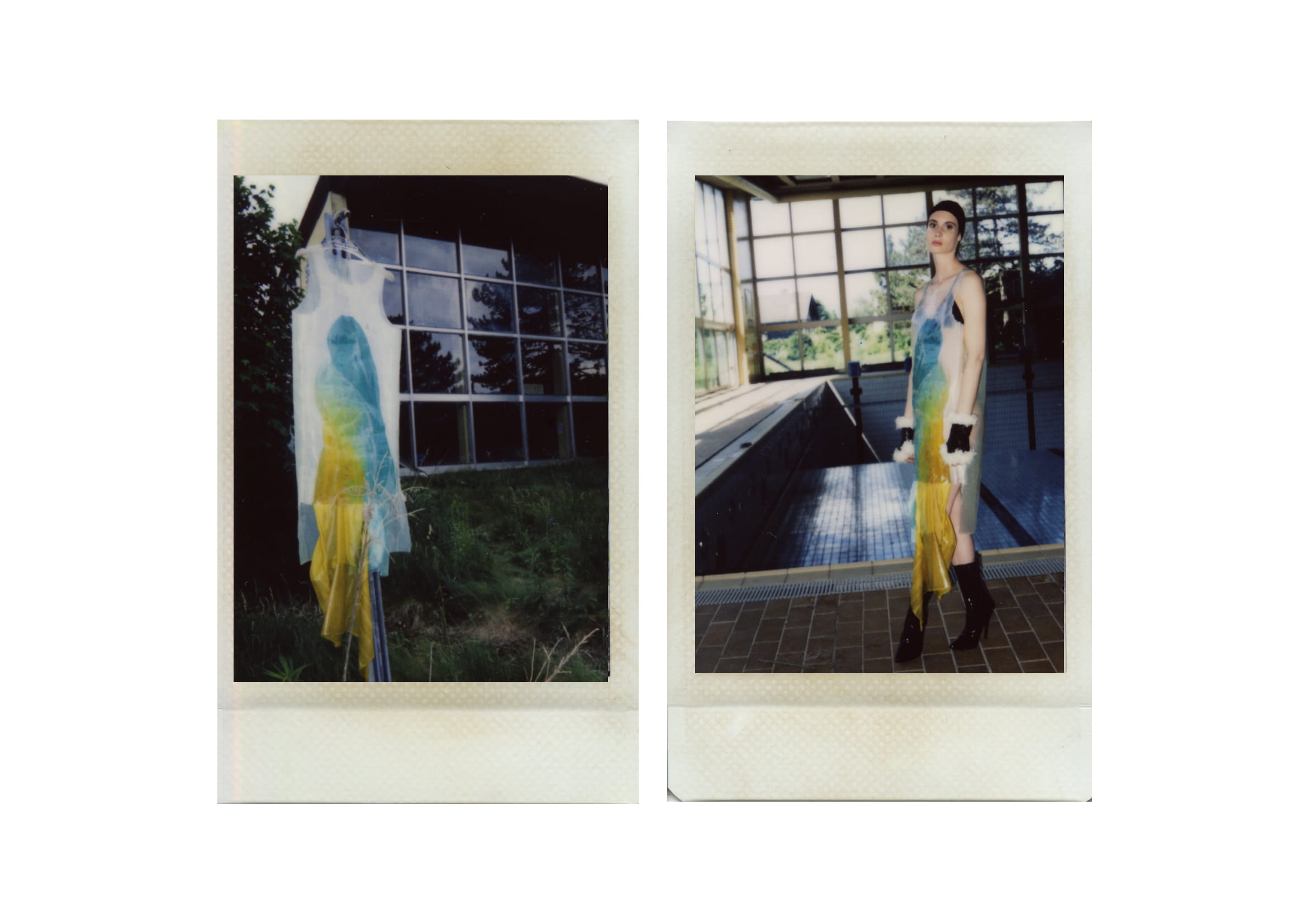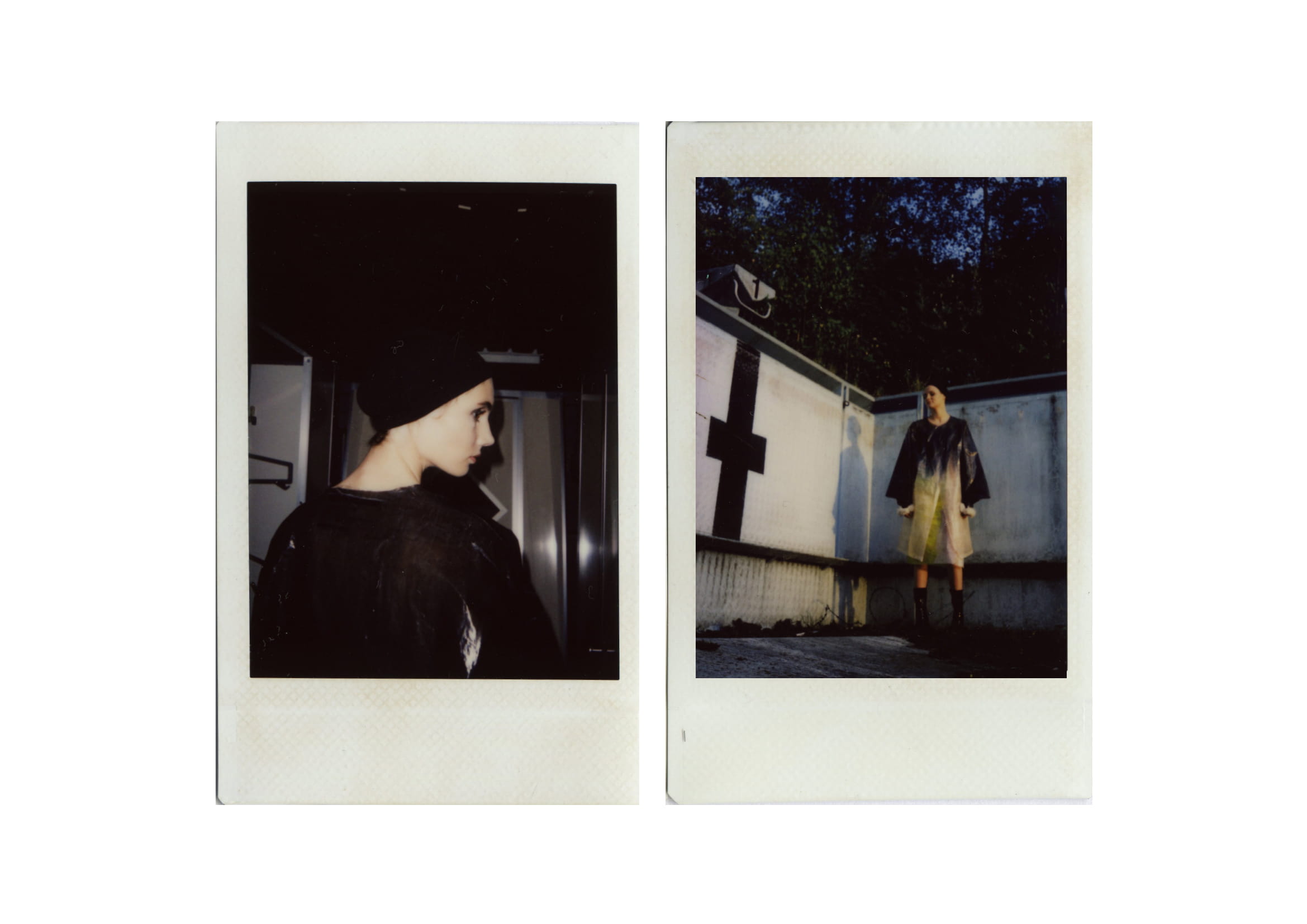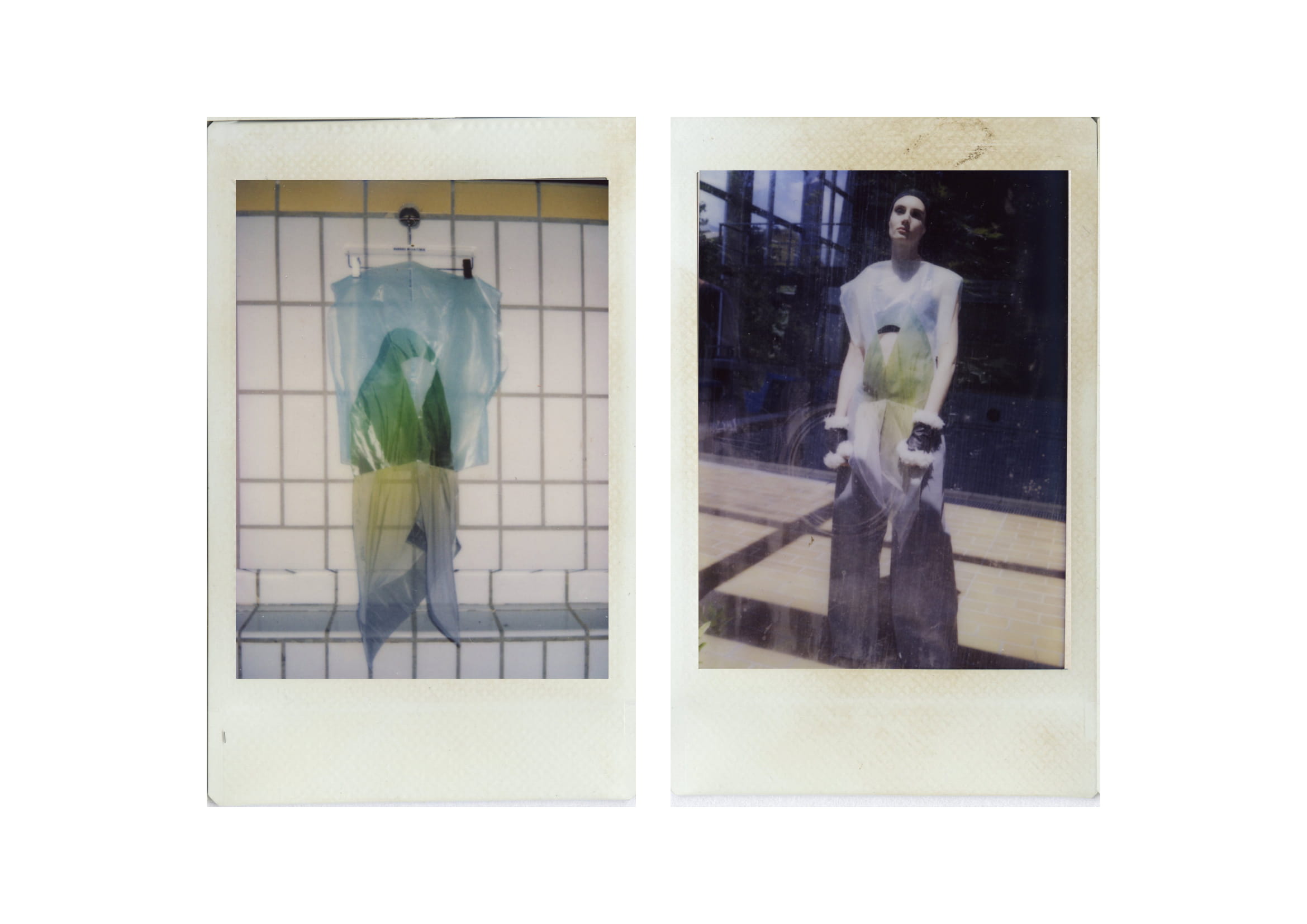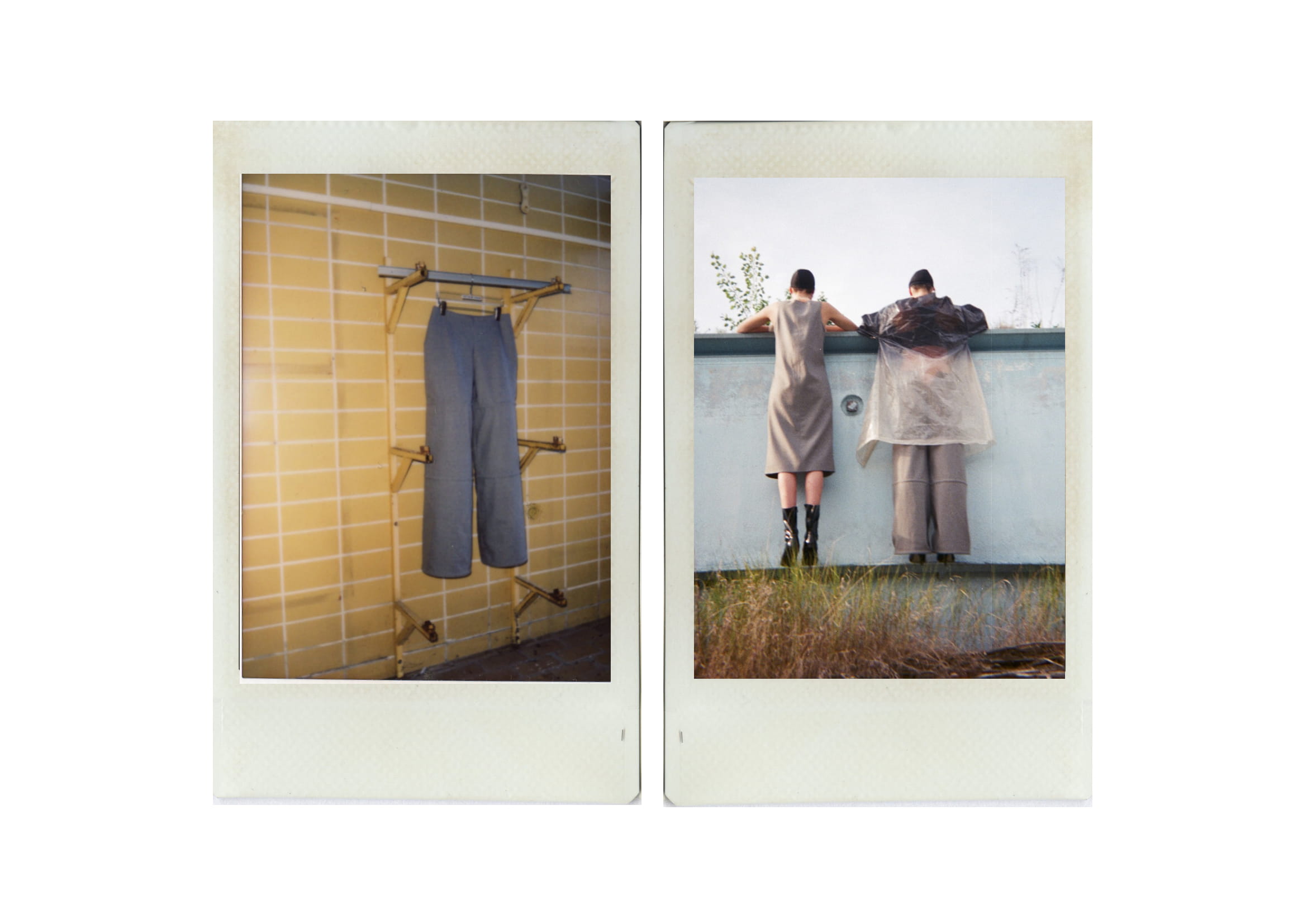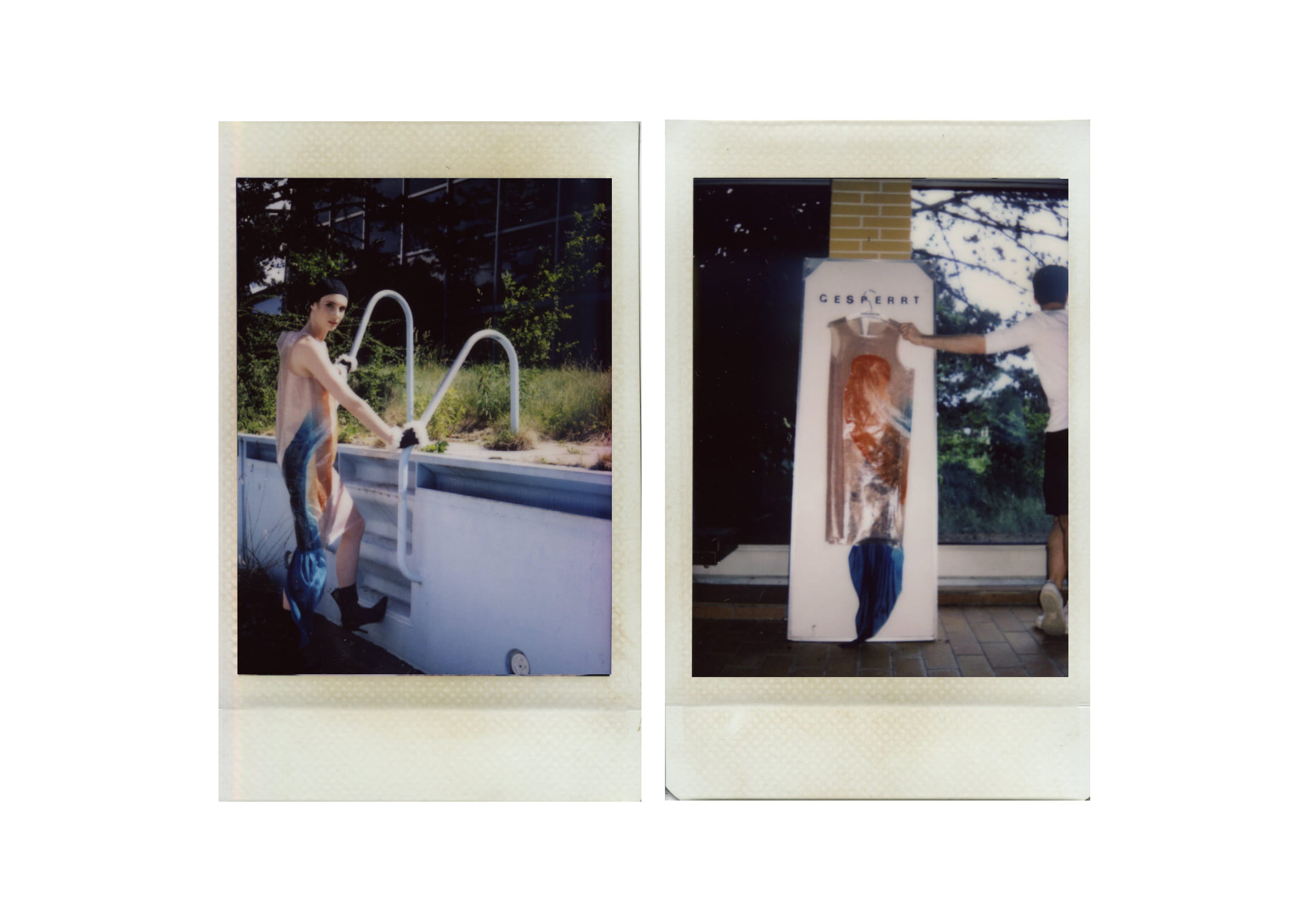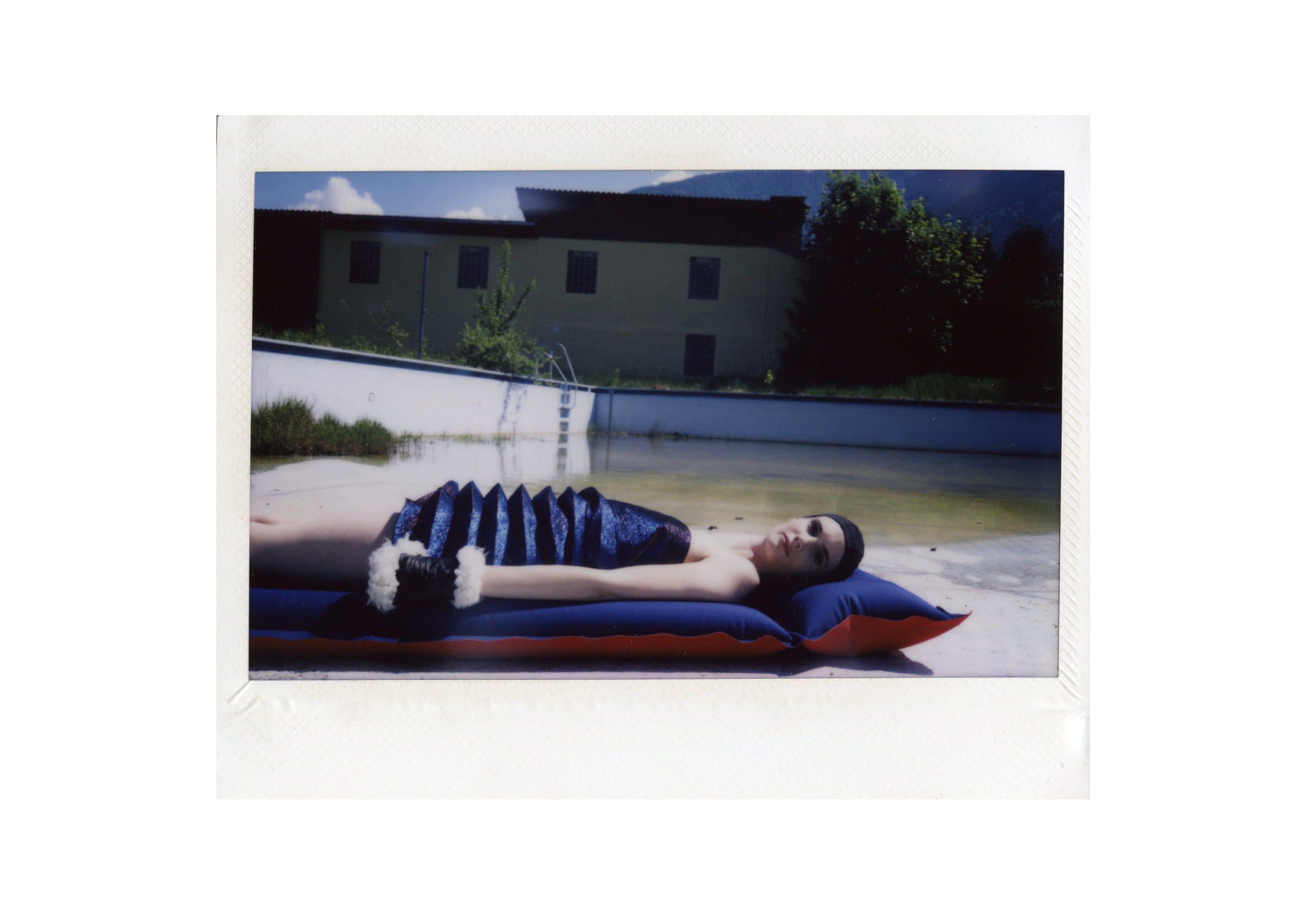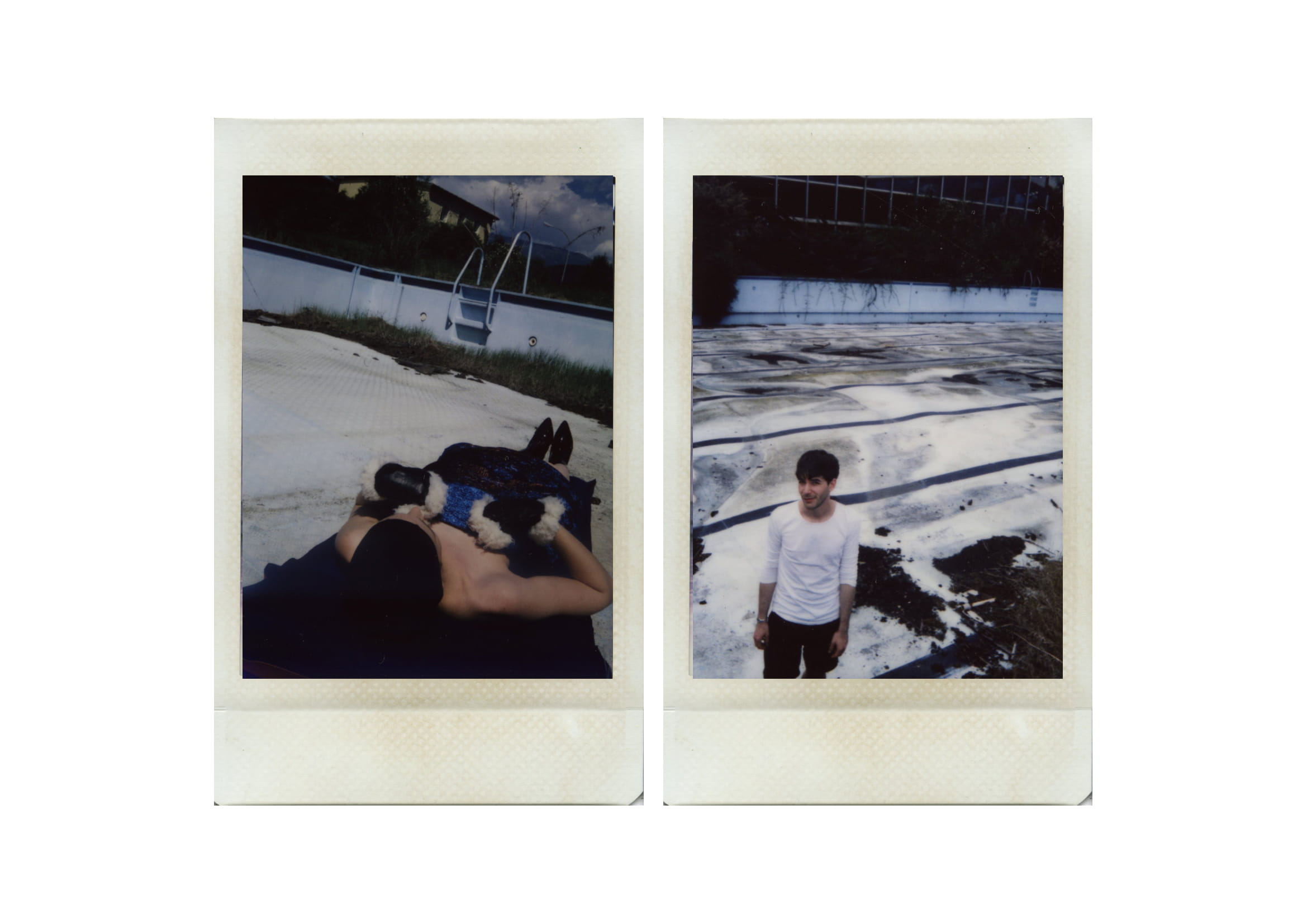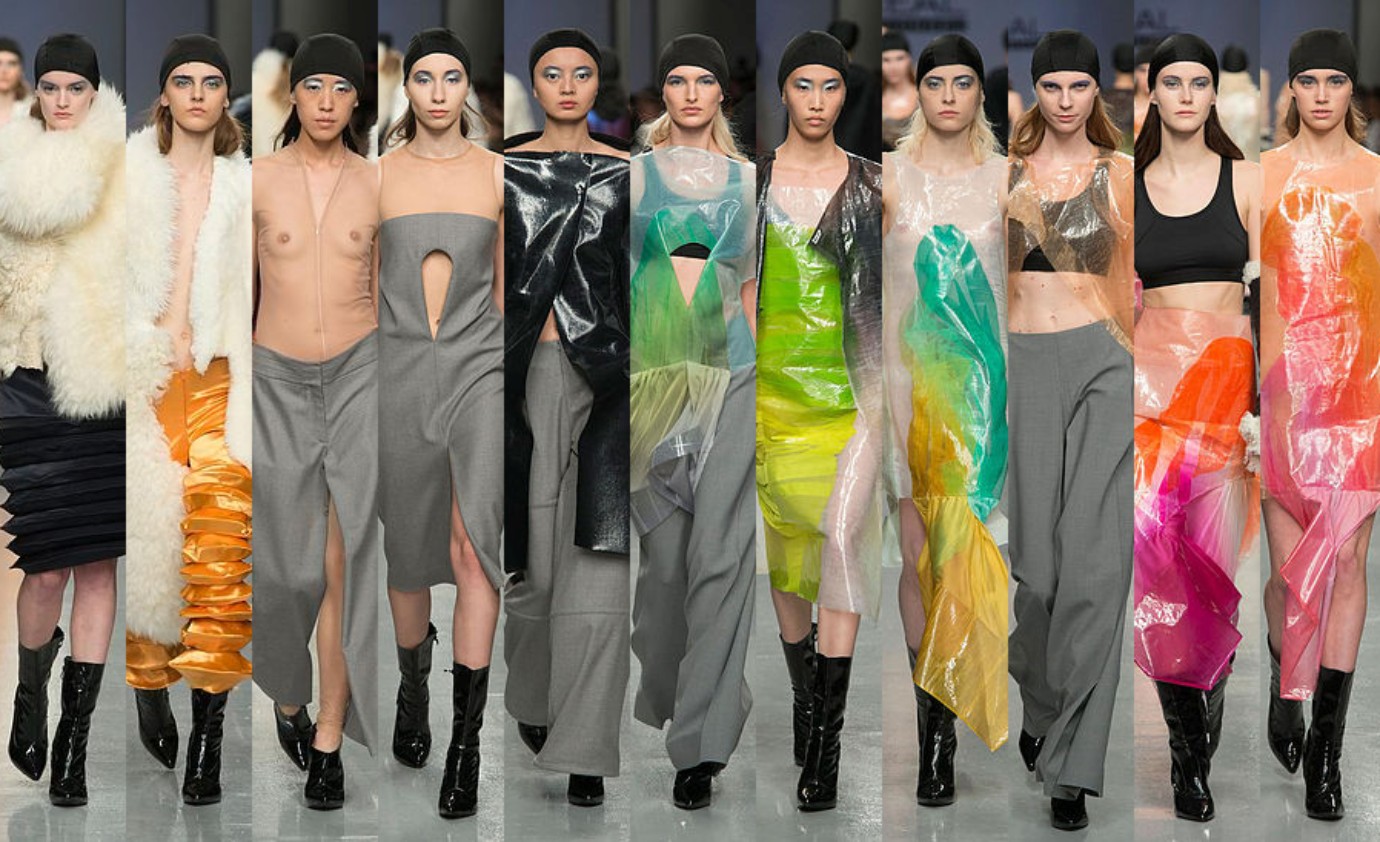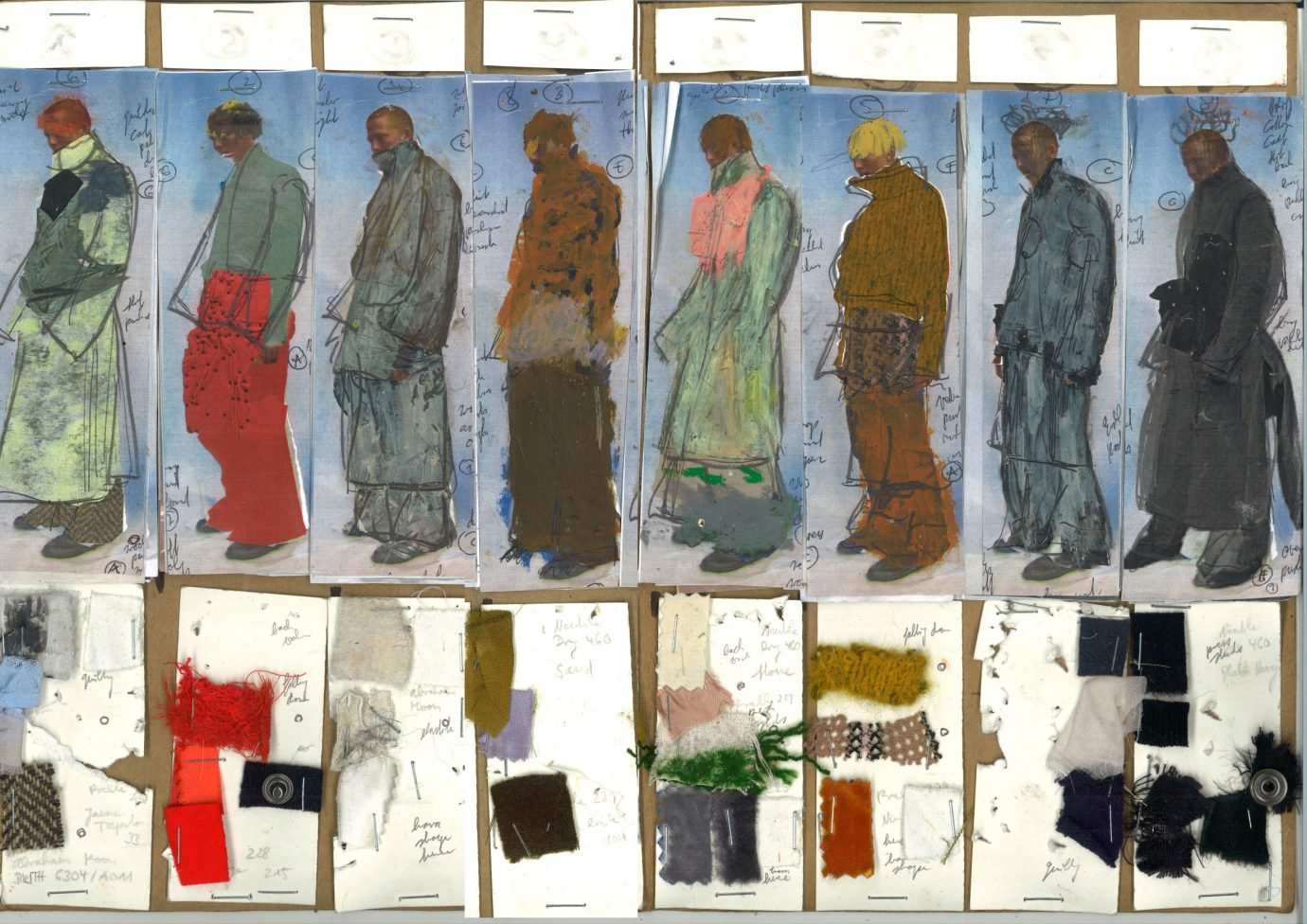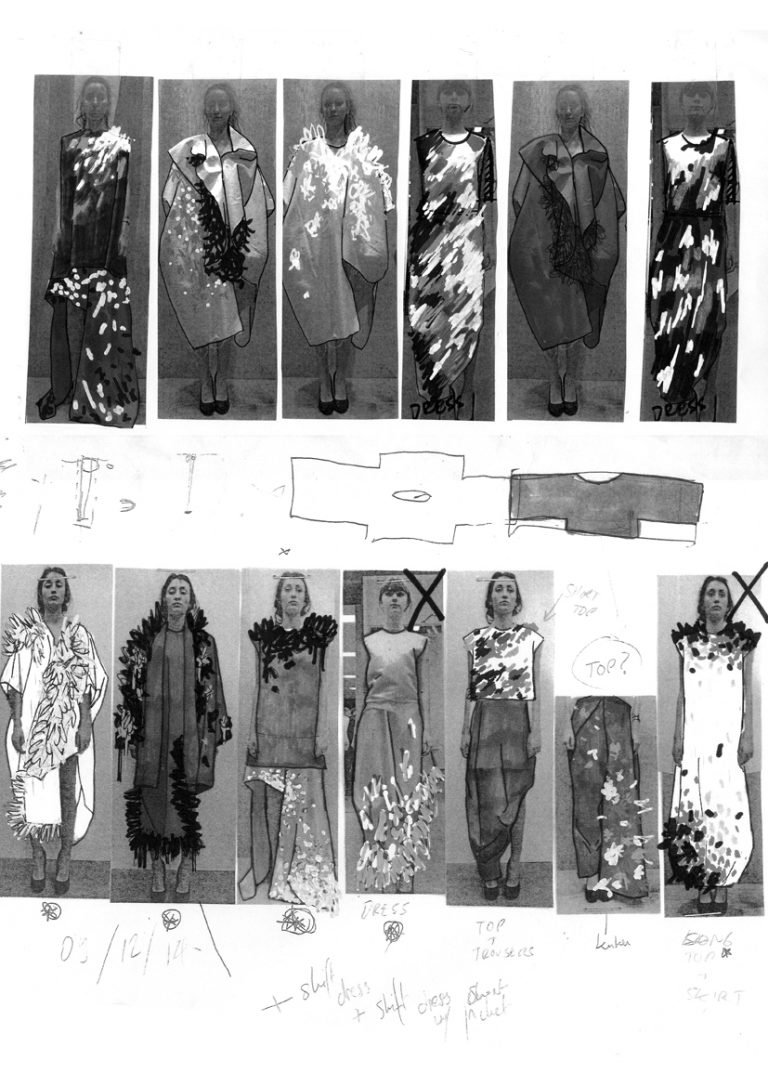The oasis of calm and order is confusing to witness in light of his recent MA collection. The collection was an eclectic mix of pieces, from voluminous sheepskin coats to grey cashmere trousers. In it, there was something for everybody. He often refers to his collection as provoking “visual discomfort,” and this being a reaction that he is proud of. “My collection took the audience a while to digest. It is not in tone with anything else out there.”
The Masters: Markus Wernitznig
The maximal minimalist who creates clothes for every woman.
The first thing that becomes obvious when you see Markus’ room is his sense of order. Everything is white, with luxurious white sheepskins strewn across industrial metal chairs. The wardrobe is strictly organized – matching hangers support all of the perfectly presented clothes, from grey cashmere pieces on the left to navy on the right. Later in the interview, he reveals that he has a hidden section of patterned and colourful clothes tucked away at the back of his wardrobe, and everything makes a little more sense.
The collection was inspired by L’Enfer, a series of experimental movie fragments by French director Henri-Georges Clouzot. L’Enfer was made in the 1960s when colour film was first commercialised. Throughout the movie, flashes of bright colour and flickering light are juxtaposed with classic black and white shots. This intense mixture of bright colours and tonal greys is reflected in Markus’ collection which, much like the movie, features multiple distorted sequences.
His pre-collection was minimal and far more masculine, but he likes the idea of a complete sense of departure, whilst staying with what you know. “Some people have said my MA was totally me but totally different at the same time.” For Markus, this is the biggest compliment possible – he always wants to move forward to the next thing.
L’Enfer is not the first film to inspire Markus. His BA collection was inspired by The Holy Mountain, a 1973 film by Alejandro Jodorowsky. Often, young designers are inspired by the work of great designers from the past, but Markus prefers the work of avant-garde filmmakers. “Taking inspiration from a movie is a complex thing,” Markus admits. “You’re entering someone else’s world and you reinterpret it for yourself. In this case, the movie was never finished, so it’s even more complex.” It is clear Markus feels a strong connection to Henri-Georges Clouzot – he takes out a photograph of the director’s diary and puts it next to his own. Both are meticulously ordered and beautifully written. “I am obsessive to a point, but then I have to let go because otherwise, you’re not creative.”
You can read the collection like the sequences of a film, each so distinct that people have questioned whether they are by the same designer. Referred to as ‘passages’ by Markus, the collection opened with sculptural trousers and patchwork shearling jackets, then moved on to the classic but sculptural dresses, only to close with flowy silhouettes in colourful, degradé chiffon heat-melted to plastic. To help maintain cohesion throughout, every look was shown with black swimming-cap type hats, and the looks without shearling were worn with a pair of black shearling gloves. Although advised by multiple influential people, including the indomitable Alber Elbaz, to show the looks without the gloves, Markus kept them as part of the lineup; he knew without them people might struggle to see the collection as a whole.
The first ‘passage’ of Markus’ collection opened the MA show and it is clear why. The voluminous shearling coats and bright silk trousers depicted a powerful, confident woman. This is the passage that Markus seems most proud of – he had never worked with shearling before, and took time to track down the right type, eventually sourcing it from British sheepskin company Glencroft. The coats had to be manufactured in Italy, using specialist machinery, and even that was not the most difficult part of the process. Markus had to keep his use of sheepskin a secret until the show, cutting these looks off his lineup for press previews. For the final passage, Markus developed a new kind of material, where he trapped silk inside layers of plastic. To him, this was representative of the intermittent use of colour seen in L’Enfer.
The different parts of the collection represent the women that Markus visualizes as part of the world of L’Enfer. He feels a connection to protagonist Romy Schneider, as they are both Austrian. The glamour that she exudes can be seen in all parts of his collection, through the enchanting colours and luxurious fabrics. “I think you could describe this collection as minimal maximalism – some passages are more, and some are less. My work throughout my life has floated between minimal and maximal.” The one aspect of his life where Markus can’t seem to tone it down, however, is his perfectionism. “What keeps me awake at night is it’s not good enough – it’s not relevant enough, not modern enough, not pushed enough.”
Also the shoot that accompanied his graduate collection needed to be just right. After working for Alexander McQueen in Italy – which involved many late-night strolls past tourist hotels closed for winter – Markus knew he wanted to do the shoot in an abandoned swimming pool. When he went back home to Austria for the 2017 Fashion Award, he found out that the pool he learned to swim in was empty and available. After a year of hard work leading up to his graduation, everything magically came together. “I’m getting goosebumps just thinking about it!” Markus claims. “It was a surreal moment when we were doing the shoot, I found out half of my team learned to swim there as well. Then my clothes arrived from London one hour before we were supposed to start.”
It seems like the future can’t shine brighter for Markus Wernitznig. When I call him a few months after our first interview, the young designer is soaking up some Venetian rays in a sun lounge chair after a long day of working on a freelance project. A year has passed since his graduation, and if he had one piece of advice to share with those starting the MA, it would be this: “I saw it as a chance to do what I wanted to do one last time. Rather than not being able to sleep at night because it’s not perfect enough, or because your tutor might not like it, just enjoy the chance of doing something that is entirely yours.”

